#AcademicBlog
Explore tagged Tumblr posts
Text
Reader
Jenkins, H., 2003. Transmedia Storytelling. [Online]
In the world of video games the characters are always a high importance to the game, and even more so when we look at it from a transmedia perspective. Transmedia is more than just the charcters appearing in more than one media form, its about a story telling technique that the characters hold along the way, with media outlets such as games, films, comics, or even music, new storys are told beyond what each of the last media source expanded on.
What characters bring to transmedia is important, but world building is too, Jenkins emphsives this by saying that where well written characters and uphold strong narraitves, which in trun makes for a good franchise, the world is just as, if not more important than the characters, as the world is what can contain multiple chaarcters at once, each independently, allowing transmedia to be much more immesive for the consumer and really understand its universe as well as its characters.
As an environemtanl artist this is intresting as tells me how important our job role can be, and the far our work can really go if it is done to a high quality.
Simons, J., 2007. Narrative, games, and theory. Game studies, 7(1)
Game Theory and Narrative have their similarities, both can include things like characters, locations, player or reader experience and emotion, this is more than just a story or a series of events. They both focus on the same principles, with the main one at hand in analysing a sequence of events, that being the story, provided the game is one that has a story and a narrative.
However, Simons then explains that Ludology sees Game Theory and Narrative as two different entities and not comparable. From a ludology perspective games and narratives are fundamentally different as to how they simulate actions from a story, while one just represents them, the interactive aspect is what ultimately sets them apart.
Isbister, K., 2016. How Games Move Us: Emotion by Design
Games can have a huge influence on peoples emotions in multiple ways, and I would argue, more so than films, novels and television can. Isbister explains how these mediums of comsuption, while still able to move lots of people, they influence emootion through the user following along with the narrative, reacting, with no personal imput or say on the matter or outcome, there is the barrior between the user, and the consumer. With games, players break that barrier with its unique ability to become a part of it, bring peoples personalities into play.
This was a good source because it highlights a games uniqueness in the world of media and how it can effect the players, from an environmental artist perspective, highlights how its important not to just make the game look good, but make the game feel good through the use of different art techniques to make it resonate with the player.
Cairney, T. (1990). Intertextuality: Infectious Echoes from the Past. The Reading Teacher, 43(7), 478–484. )
This article by Cairney highlights how, in the context of children’s literature, our past knowledge can influence how we write, consciously or subconsciously. He informs us of his findings how children can use that past knowledge of different medias like fairy tales, stories and tv, influence the creative ability to create new texts, and in his findings, the children are aware of their own intertextuality.
Intertextuality is a natural part of reading and understanding, especially for young learners. This paper focused more so on literature and children; the same theories can apply to other forms of media an adult. I myself find intertextuality in my own artwork and helps me become a better artist.
Berger, J. (2008). Ways of Seeing. United Kingdom: Penguin Books Limited
This book is based on a TV series also called, Ways of Seeing, aired on the BBC. It underlines how the reader can look at art and think more critically about what they are seeing, and how we perceive it. Its about opening a scope beyond, taking into consideration things like culture, history and ideas.
He touches on discussion very relative to games in how the male gaze has a role. Though he doesn’t directly take about it in this context relating to games, the same concepts can still be seen. Woman are represented as not just subjects, but objects to be looked at for the appeal for men, and this can be found in old paintings, but in todays world, can still be found today in some games.
Taetz, M., 2018. Gesamtkunstwerk: The Artwork or the Cave of the Future.
In this research piece, Taetz analyses the concept of gesamtkunstwerk, or “the total work of art” from its origins popularized by Richard Wagner. He argues that while romantic movements have faded and aren’t a prevalent as there was, the idea of gesamtkunstwerk can still be applied and even more so with the creation of Hollywood films and video games. The total work of art is taken to even more heights with these mediums, and with Wagner’s ideas only now being intensified through these sources.
I found this essay very insightful as it talks about how gesamtkunstwerk was used in a specific use case, but the bases of the ideas are very much profound and can be applied in more ways that I thought. It made me think about it more critically, and how the spectator can become one of the elements Wagner talks about, as the spectator becomes one of the elements in the total work of art.
Guergana Guintcheva, Hager Jemel-Fornetty, Laura Lacombe, Isis Beloslava Daudé (2022). Gender stereotypes in video game narratives.
Gender stereotypes are a big topic in the gaming industry and personally I believe there is a good reason for it. This article is a collaboration of multiple people of disgusting fields, it relays a lot of facts and statistics about female representation in the gaming industry, mentioning male vs female characters and their roles and how they are represented in the games.
Its an interesting read because of the numbers brought into the conversation which invokes a bit of shock for the reader, the signs are glaringly obvious in some regards to the representation, while the male gaze is a prominent concept in games and is quite apparent, other aspects are under shadowed, the males in games are often in positions of power with their roles in games, while women are confined to more caring roles. It’s quite eye opening.
Luke Ahearn (2008). 3D Game Environments, Create Professional 3D Game Worlds.
While this isn’t so much an article or research paper, it is a highly informative book about 3D Game Art and what it takes for artists to create high quality environments at the highest level, explaining different applications in a practical and theoretical sense. It distinguishes the differences between level designers and 3D artists, clarifying what is expected from each role, how they can get confused with each other, before going onto, in detail the intricacies and methods of becoming a great 3D Environmental Artist.
As an inspiring 3D Environmental artist myself I wanted to include this book as it is the most relevant, I can get to my current practice, it has everything I could need into one book in reference to any type of design choice or environment I would want to create.
0 notes
Text
✧ pre-med extracurriculars: for my future doctor angels ✧





hi my lovely pre-med angels!! 🤍 it's mindy hereee!
today's post is extra special because so many of you have been asking about extracurriculars for medical school!! if you know, my ultimate dream is to become a doctor, i'd love to either be a psychiatrist or a cardiologist, so anything medical-related is my favorite cup of coffee!! i'm literally so excited to share this comprehensive guide that will help you shine on your future applications. this post is for you if you're in high school or college, this guide will be your bestie through the journey!!
~ ♡ for my precious high school sweethearts ♡ ~
hospital + healthcare volunteering (my absolute fave!!) • aim for 100-150 hours minimum • try different departments to explore • build relationships with nurses + staff • pro tip: volunteer during summer break for more hours • keep a reflection journal of your experiences • bonus: ask for recommendation letters if you connect well!!
research opportunities • reach out to local universities • email professors about summer programs • join science fairs with medical projects • create your own research project • tip: start with literature reviews if labs aren't available • document everything for future applications!!
leadership + school involvement • start a medical interest club • lead health awareness campaigns • organize blood drives • create mental health support groups • join science olympiad • participate in biology competitions • personal story: i started a "future doctors club" + it literally changed my life!!
~ ♡ for my darling college angels ♡ ~
clinical experience (super important!!) • medical scribing (literally the best!!) • certified nursing assistant (CNA) • emergency medical technician (EMT) • phlebotomy certification + gain a bunch of different certifications online • medical assistant • tip: aim for 200+ hours minimum • pro secret: try different specialties!!
research involvement • join multiple labs if possible • aim for publication opportunities • present at conferences • write abstracts + papers • network with graduate students • maintain good relationships with PIs • secret tip: join journal clubs!!
leadership positions • pre-med society officer • tutoring coordinator • mentorship program leader • research team leader • volunteer coordinator • tip: create new positions if none exist!!
~ ♡ extra special activities for everyone ♡ ~
medical mission trips (life-changing!!)
start a health education blog
create medical awareness social media
join medical podcasting
organize health fairs
volunteer at free/non-profit clinics
shadow different specialists
join pre-med summer programs
work as a pharmacy technician
volunteer at nursing homes
organize medical supply drives
create health education programs
~ ♡ my personal tips + secrets ♡ ~
quality over quantity always!!
maintain each activity for at least 6 months
document everything (literally everything!!)
take lots of pictures (for memories + portfolio)
get contact info from supervisors
keep detailed reflection journals
network with other pre-meds
create spreadsheets to track hours
always ask for recommendation letters
maintain professional relationships
~ ♡ time management secrets ♡ ~
use google calendar religiously
block schedule your activities
don't overcommit (seriously!!)
maintain 2-3 main activities
rotate seasonal activities
leave time for self-care
schedule study breaks
plan one year ahead
keep backup activities ready
remember my loves: medical schools want to see dedication + passion!! don't just collect activities like pokemon cards (even tho that would be cute). focus on meaningful experiences that truly speak to your heart!!
pro tip: start a bullet journal to track your journey!! include your thoughts, feelings, and learning experiences. future you will literally cry happy tears when writing your personal statement!!
also!! please please please remember that your mental health comes first!! it's okay to take breaks, it's okay to say no, and it's absolutely okay to prioritize self-care. you'll be a better doctor if you learn these habits now!!
sending you the biggest virtual hugs + all my love!! you're doing amazing sweetie, and your future patients will be so lucky to have you!!
feel free to send more asks if you need specific advice!! i'm always here to support my precious future doctors and followers i call my sweetheart community!!
xoxo, mindy 🤍
p.s. remember to hydrate, get enough sleep, and take your vitamins!! doctor's orders!! <3
p.p.s. i'll be sharing more detailed guides about each activity soon, so stay tuned my loves!!
btw, if you need personal study advice or anything, submit to glowettee hotline 💌: https://bit.ly/glowetteehotline

#premed#premedlife#medschool#futuredoctor#studyblr#studygram#medicalschool#studentlife#extracurriculars#medicalstudent#medschoolprep#premedmotivation#premedadvice#premedblog#medschooljourney#premedcommunity#futurephysician#medicaljourney#medschoolbound#studytips#medschoolguide#premedguide#medstudent#premedstudent#medschoollife#medicaladvice#collegelife#highschoollife#academicblogs#studyinspo
123 notes
·
View notes
Text
twenty days until i'm free we are sooooo close
#22 days until i'm free from the house though#but that's fine i can handle it#20 days ... fuck#i've got a whole thesis to write#can't stress that enough#but tomorrow needs to be a revision day#aaaaauuuuuuuuuggggggghhhhhhhhhhh#maybe. tomorrow as a revision day then i have the 19th to do more on the report if it all goes well#20th and 21st are 2 more revision days#exam on the 22nd#then i've got until the 29th to laser focus on the report#so basically i've got a week#to do my thesis#:/#well. alright.#it'll be fine#20 days until i can stop academicblogging
2 notes
·
View notes
Text
Sources and Significance (Academic Blogs)
The History of Mixed Reality
Introduction
Mixed Reality (MR), neither confined to the overlays of Augmented Reality (AR) nor the isolated spaces of Virtual Reality (VR), exists as an interactive fusion of the two. This convergence allows users to manipulate digital and tangible elements simultaneously, transforming industries like healthcare, education, and entertainment.

Figure 1 (Introduction to mixed reality, (Microsoft Learn, 2023))
The history of MR is deeply intertwined with advancements in AR and VR. Its roots lie in decades of scientific exploration into human-computer interaction, spatial computing and holography. From its conceptualization to its present form, MR has reached key milestones, faced several challenges, and has great potential in shaping the future of technology and human interaction.
Theoretical Foundations and Early Beginnings
The conceptual origins of Mixed Reality can be traced to Paul Milgram and Fumio Kishino’s seminal work, A Taxonomy of Mixed Reality Visual Displays (1994). Their “Reality-Virtuality Continuum” positioned MR as a bridge between purely physical environments and entirely virtual ones. This theoretical framework, inspired by earlier research into human-computer interaction, offered new opportunities for understanding how digital and physical worlds could coexist.
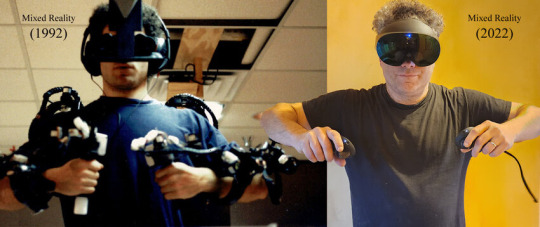
Figure 2 (History of Mixed Reality, (Rosenberg, 2021))
Long before MR became a practical reality, Ivan Sutherland’s vision of “The Ultimate Display” (1965) laid its philosophical foundation. Sutherland, often called the father of computer graphics, imagined a system where virtual objects behaved indistinguishably from real ones, predicting MR’s eventual impact. This vision was expanded upon in Howard Rheingold’s Virtual Reality (1991), which examined technologies’ potential to provide immersive perception and interaction. Although focused on VR, Rheingold’s analysis foreshadowed MR’s ability to blend the digital with the tangible.
Technological Milestones and Key Innovations
The journey from theory to implementation of Mixed Reality required significant technological advancements. Early developments in AR, such as the introduction of heads-up displays (HUDs) in the 1980s for military use, provided essential components like spatial tracking and data visualization. Meanwhile, advancements in VR, particularly Jaron Lanier’s pioneering work on virtual environments in the 1980s, contributed to MR’s foundational technologies.

Figure 3 (Apple Vision Pro: A new milestone for Mixed Reality, (Hardawar, 2023))
By the 2010s, MR began to materialize as a distinct field. Microsoft’s HoloLens, which allowed users to see holograms as well as interact with them in the real world, launched in 2016 and became a landmark device, as it integrated spatial computing, advanced sensors, and AI to create immersive environments. Technologies like global positioning and spatial mapping were instrumental in enabling MR systems to “anchor” virtual objects within physical spaces, making interactions more intuitive (Milner, 2016).
The 2018 release of Magic Leap One represented another milestone. Leveraging lightfield technology, it pushed MR closer to photorealism by producing dynamic holograms that were beginning to become indistinguishable from the real world.
The Future of Mixed Reality
The integration of MR with artificial intelligence, 5G networks, and the Internet of Things (IoT) heralds a future where the boundaries between physical and digital dissolve further (Kelly, 2016).

Figure 4 (Future of MR, (Greener, 2022))
One of the most exciting prospects lies in MR’s role within the metaverse, a shared digital space where users can collaborate and create without geographical constraints. As MR devices become lighter, cheaper, and more powerful, their adoption will expand, reshaping how people work, learn, and connect.
CONCLUSION
Mixed Reality represents a culmination of decades of theoretical exploration and technological progress. From Milgram and Kishino’s Reality-Virtuality Continuum to the advanced headsets of today, MR’s journey underscores humanity’s drive to transcend the physical limits of experience. However, as this technology matures, it must navigate ethical and practical challenges to fulfill its potential responsibly.
Virtual worlds, akin to real worlds, are only shaped by those who inhabit them, and Mixed Reality offers a rare opportunity to shape not only new environments but also the way we perceive and interact with the world itself — a prospect as thrilling as it is transformative.
REFERENCES
Microsoft Learn, 2023. What is mixed reality?. [Online] Available at: https://learn.microsoft.com/en-us/windows/mixed-reality/discover/mixed-reality [Accessed 7 December 2024].
Milgram, P. & Kishino, F., 1994. A taxonomy of mixed reality visual displays. IEICE Transactions on Information and Systems, E77-D(12), pp. 1321-1329.
Rosenberg, L., 2021. Augmented Reality: Reflections at Thirty Years. In: Augmented Reality: The Magic of 3D, pp. 1-18. Springer. doi: 10.1007/978-3-030-89906-6_1.
Sutherland, I., 1965. The ultimate display. Proceedings of the International Federation of Information Processing Congress.
Rheingold, H., 1991. Virtual Reality. Summit Books.
Hardawar, D., 2023. engadget. [Online] Available at: https://www.engadget.com/apple-vision-pro-hands-on-a-new-milestone-for-mixed-reality-060943291.html?guccounter=1&guce_referrer=aHR0cHM6Ly93d3cuYmluZy5jb20v&guce_referrer_sig=AQAAANdmFJUz5CMozdhUKNQPLSzbpUnvOrpnbWZtLMxZlzuiIRxOfqrPQuN7WQKKoFFEOEWX-yLQAqk2i [Accessed 7 December 2024].
Milner, G., 2016. Pinpoint: How GPS is Changing Technology, Culture, and Our Minds. W. W. Norton & Company.
Kelly, K., 2016. The Inevitable: Understanding the 12 Technological Forces That Will Shape Our Future. Viking.
Greener, R., 2022. XR TODAY. [Online] Available at: https://www.xrtoday.com/mixed-reality/the-market-growth-of-mixed-reality/ [Accessed 7 December 2023].
x-x-x-x-x-x-x-x-x-x-x-x-x-x-x-x-x-x-x-x-x-x-x-x-x-x-x-x-x-x-x-x-x-x-x-x-x
Male Gaze in League of Legends
Introduction
Since its launch in 2009, League of Legends has become a cornerstone of modern gaming, celebrated for its complex gameplay mechanics, competitive scene, and dynamic community. Over the years, the game has introduced a vast array of champions, each meticulously designed with unique abilities and lore. However, beyond this celebrated diversity is an issue that continues to mirror a broader challenge within gaming culture: the influence of the male gaze in the portrayal of female characters.
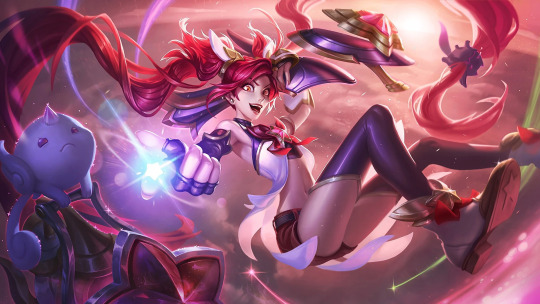
Figure 1 (Jinx of League of Legends, (Suarez, n.d.))
Female champions in League of Legends are frequently designed with hypersexualized appearances and embody exaggerated beauty standards that seem tailored to cater to a predominantly male audience. This trend both reinforces gender stereotypes and but also perpetuates a culture where women are often objectified or reduced to decorative figures. Such representations are echoes of a longer pattern that can be seen in the gaming industry, where female characters are often valued more for their physical attributes than their depth, skill, or importance to the narrative. So, as gaming evolves into a more inclusive and diverse space, these outdated portrayals need to be increasingly scrutinized in an attempt to create more thoughtful and representative character designs that celebrate all players equally.
What is the Male Gaze?
Laura Mulvey’s concept of the male gaze describes the way women are often represented in visual media as objects of visual and erotic pleasure, constructed to cater to the perspective of a heterosexual male viewer (Mulvey, L., 1975). This framing diminishes women’s autonomy and positions them as passive participants rather than active agents within stories.
The male gaze operates on three interconnected levels. First, it is embedded in the perspective of the camera, which often lingers on or frames women’s bodies in ways that sexualise or objectify them. Second, it appears within the perspective of the characters, with male characters often gazing at and interacting with female characters in ways that reinforces their roles as objects rather than subjects. Finally, it assumes the perspective of the audience, treating the heterosexual male viewer as the default demographic and shaping female representations to appeal to this demographic.
Mulvey’s critique shows how these depictions reinforce patriarchal power structures, relegating women to roles that prioritize their appearance over their agency. This concept has been influential in feminist theory as it offers a framework to analyze the ways in which media reinforces gendered power imbalances. The male gaze remains a pervasive issue across various forms of media, from film to advertising to video games, where the framing of women often reflects these same dynamics.
Champion Design: A Double Standard
The disparity between male and female champion designs in League of Legends i s quite stark. Female champions like Ahri, Miss Fortune, and Evelynn exemplify hypersexualisation with their revealing outfits, suggestive animations, and flirtatious narratives.
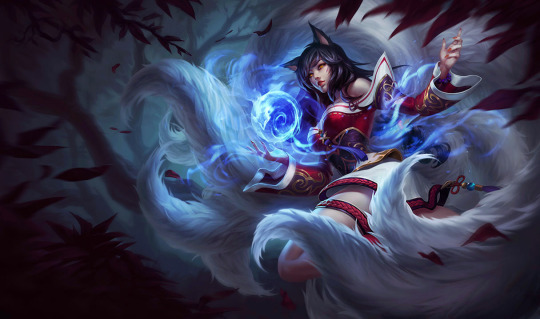
Figure 2 (Ahri of League of Legends, (League of Legends Wiki, n.d.))
Ahri, a champion from League of Legends, exemplifies the male gaze through her design and gameplay mechanics, aligning with Laura Mulvey’s framework. Known for her charm and seductive persona, Ahri’s appearance is tailored to a hyper feminine aesthetic that appeals to the aforementioned heterosexual male viewers. Her slim figure, revealing attire, and flirtatious demeanor reinforce traditional beauty standards, making her a visual spectacle rather than a character defined by depth or complexity. Her personality is also centered on allure, with her lore and in-game interactions emphasizing her enchanting and manipulative qualities rather than any substantial internal development.
Ahri’s gameplay further reflects this dynamic, particularly in her ability “Charm.” This ability literally weaponizes seduction, as she sends out a kiss that damages and charms opponents, rendering them incapacitated and drawn toward her. The move’s animation emphasizes her sultry appeal, ensuring that even her battle mechanics echo the theme of using beauty and allure as a tool. Within Mulvey’s framework, Ahri caters primarily to the perspective of the audience, as her design assumes a male player who appreciates her sensuality. This reduces her identity to an object of desire, reinforcing the male gaze by prioritizing how she looks and performs over a balanced or multidimensional representation. While Ahri is a beloved character, her design and abilities perpetuate the broader trend in media where female characters are crafted to fulfill external expectations rather than reflect internal complexity.

Figure 3 (Miss Fortune of League of Legends, (League of Legends Wiki, n.d.))
Miss Fortune, another League of Legends champion, is a character that is established as a fierce and confident bounty hunter with leadership qualities — yet her visual representation prioritizes sexual appeal over practicality or authenticity. Her exaggerated curves, revealing outfits, and suggestive poses overshadow her identity as a strategic and powerful captain. Furthermore, her voice lines in the game are delivered in a tone that is unmistakably seductive. Her flirtatious inflection, paired with lines that emphasise her charm, reinforces her hypersexuality. For example, lines like “You've got dangerous eyes... I like that” are said with a sultry cadence, which draws more attention to her sensuality and her capabilities.
This portrayal aligns closely with Mulvey’s theory, particularly in how Miss Fortune caters to the perspective of the audience and male characters within the game’s world. Her confidence and flirtatiousness, rather than being empowering traits, are often presented as tools to reinforce her sexual objectification. By focusing on her lascivious nature, the game reduces her identity to her ability to attract and entice, rather than emphasizing her competence as a leader or her emotional depth. This duality in her character — her capability as a captain juxtaposed with her impractical, revealing design and flirtatious demeanor — is one of the many persistent challenges of representing women authentically in gaming media.
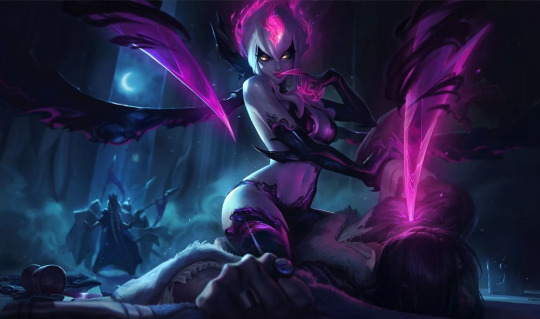
Figure 4 (Evelynn of League of Legends, (League of Legends Wiki, n.d.))
Lastly, Evelynn, a so-called demon born of lust and the consequences of unchecked desire, has an identity purely defined by her sensuality. Her existence reflects the darker side of human vulnerability, as she preys on those overcome by their own cravings, luring them in with beauty and charm only to leave them devastated or destroyed. Thus, her backstory positions her as a horrific reminder of the cost of wanton desire.
Despite this chilling and complex premise, however, Evelynn’s design often undermines her narrative potential. Her provocative outfits and sultry demeanor draw more attention to her appeal as a hypersexualized figure than to the depth of her role as a predator and tormentor. Instead of fully embracing her nature as a nightmarish embodiment of lust gone awry, her characterization leans heavily into the male gaze, turning her into a figure designed more for visual pleasure than storytelling. This disconnect between Evelynn’s lore and her presentation highlights how gaming media often reduces female characters, even those with rich and unsettling narratives, to simplified and objectified versions that cater to audience expectations rather than their intended themes.
Cultural Consequences of the Male Gaze
These design choices reinforce harmful stereotypes about women, both within the gaming community and beyond. Female players are confronted with representations that reduce their gender to mere decoration, perpetuating a culture where women are objectified and undervalued. For male players, the normalization of these portrayals reinforces narrow perceptions of masculinity and femininity, creating an exclusionary and often hostile gaming environment.
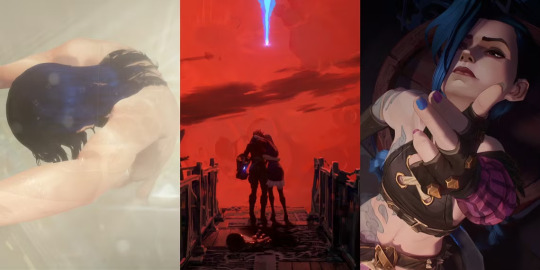
Figure 5 (Arcane based on the lore of League of Legends, (King, 2021))
The male gaze also limits the creative potential of games like League of Legends. Instead of exploring rich, multidimensional characters, developers lean on tired tropes that prioritize aesthetics over substance. This diminishes the narrative depth of the game and alienates a significant portion of its player base.
Steps Toward Inclusive Representation
Recent efforts by Riot Games show a willingness to address these criticisms (Marks, 2018). Champions like Illaoi and Taliyah break away from traditional gender norms. Illaoi’s muscular physique and commanding presence challenge stereotypical notions of femininity, while Taliyah’s modest design centers her as a powerful and relatable mage.
However, such designs remain exceptions rather than the norm. Broader change requires consistent efforts to create champions whose appearances align with their stories and abilities, not preconceived notions of desirability. Inclusive representation isn’t just about diversifying aesthetics; it’s about fostering a culture where all players feel valued and respected.
Conclusion
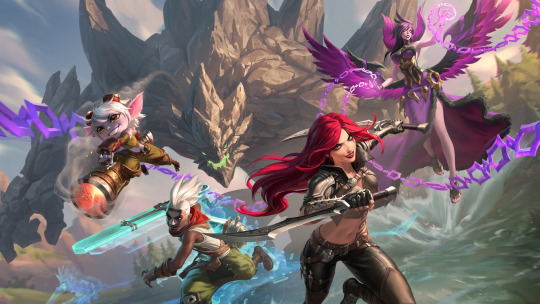
Figure 6 (League of Legends, (Denzer, 2023))
The male gaze in League of Legends is a reflection of a larger issue within gaming: the struggle for authentic and equitable representation. By addressing these entrenched patterns, League of Legends has the potential to lead the industry toward a more inclusive future. Developers must recognize the power of representation, not only to challenge stereotypes but to enrich the gaming experience for everyone.
A world where gaming is free of the male gaze is one where creativity flourishes, players, especially female players, feel truly represented, and games reflect the diversity of the communities that play them. It’s time for League of Legends and its developers to fully embrace that vision.
REFERENCES
Suarez, L., n.d. GAMERS DECIDE. [Online] Available at: https://www.gamersdecide.com/articles/lol-best-female-champions [Accessed 8 December 2024].
Mulvey, L., 1975. Visual pleasure and narrative cinema. Screen, 16(3), pp. 6-18. Available at: https://doi.org/10.1093/screen/16.3.6 [Accessed 8 December 2024].
League of Legends Wiki, n.d. League of Legends Wiki. [Online] Available at: https://leagueoflegends.fandom.com/wiki/The_Nine-Tailed_Fox [Accessed 8 December 2024].
League of Legends Wiki, n.d. League of Legends Wiki. [Online] Available at: https://leagueoflegends.fandom.com/wiki/Miss_Fortune/LoL [Accessed 8 December 2024].
League of Legends Wiki, n.d. League of Legends Wiki. [Online] Available at: https://leagueoflegends.fandom.com/wiki/Evelynn [Accessed 8 December 2024].
King, J., 2021. THE GAMER. [Online] Available at: https://www.thegamer.com/arcane-league-of-legends-male-gaze-vi-caitlyn/ [Accessed 8 December 2024].
Marks, T., 2018. IGN. [Online] Available at: https://www.ign.com/articles/2018/04/05/league-of-legends-dev-responds-to-complaints-of-oversexualizing-its-newest-character [Accessed 8 December 2024].
Denzer, T., 2023. SHACK NEWS. [Online] Available at: https://www.shacknews.com/article/136822/league-of-legends-ranked-splits-2024 [Accessed 8 December 2024].
x-x-x-x-x-x-x-x-x-x-x-x-x-x-x-x-x-x-x-x-x-x-x-x-x-x-x-x-x-x-x-x-x-x-x-x-x
The Representation of Women in Video Games
Introduction
The representation of women in video games has been a contentious issue for a long time. In their early years, video games were primarily marketed to young male audiences, significantly shaping female characters’ portrayal — or rather, their lack thereof. Women were often relegated to passive or hypersexualized roles, which often reflected both the cultural norms of the time and the industry’s commercial focus on its male demographic (Mulvey, 1975).
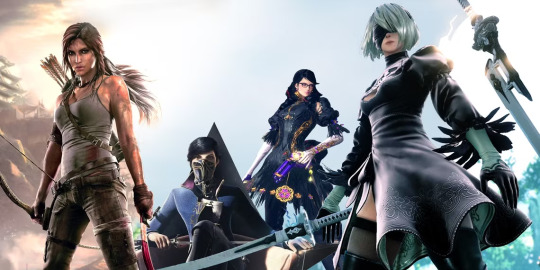
Figure 1 (Video games with female protagonists, (Mitra, 2023))
However, the expansion of video games into mainstream culture and the diversification of its audience have challenged these outdated portrayals. As gaming has grown to reflect real-life social and political movements advocating for inclusivity, female characters have transformed from passive objects to active protagonists. Thus, it is essential to explore the evolution of women’s representation in video games, from its beginnings to the present day, to see the progress made in creating complex, multi-faceted female characters.
Historical Context
The early history of video games was shaped by technological limitations and cultural attitudes that often marginalized women. In the 1970s and 1980s, female characters were rare and underrepresented, and characters were largely created for the heterosexual male audience (Ivory, 2006). The “damsel in distress” trope that emphasised male heroism and female passivity — seen in arcade classics such as Donkey Kong (1981) — dominated most video game cultures at the time.
These early games reflected the gender norms of their era, in which women were often portrayed as dependent or secondary to men. Additionally, the male-dominated development teams and the industry’s primary focus on male players perpetuated a lack of diversity both behind the scenes and on-screen.
OLDER EXAMPLES OF WOMEN’S REPRESENTATION
1. Donkey Kong (1981)
In Donkey Kong, Pauline epitomizes the “damsel in distress,” a recurring archetype in early video games that reinforced traditional gender roles. Her character exists solely as an object of rescue for the male protagonist, Mario, rather than as an active participant in the story. She has no voice, no agency, and no impact on the game’s outcome beyond serving as a prize for Mario’s heroic efforts. This depiction reflects the broader marginalization of women during the early years of the gaming industry, where female characters were either absent or assigned to passive roles.
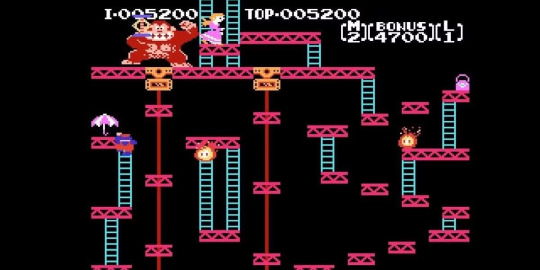
Figure 2 (Donkey Kong, (Laymon, 2022))
Pauline’s portrayal mirrors societal attitudes of the time, where the media often depicted women as dependent on male figures for protection and validation. By centering the narrative around Mario’s bravery and Pauline’s helplessness, the game perpetuated a one-dimensional view of gender dynamics that limited the role of women to ancillary characters. This lack of representation not only ignored the potential for more empowering portrayals but also reinforced the idea that video games were a male-dominated space, both in terms of audience and content. A foundational piece of gaming history, Donkey Kong exemplifies the challenges that early video games faced in breaking away from entrenched gender stereotypes.
2. Tomb Raider (1996)
When Tomb Raider debuted in the mid-1990s, it was heralded as a milestone for female representation in gaming due to its iconic protagonist, Lara Croft. As a skilled archaeologist and adventurer, Lara broke the mold of passive female characters by taking on a leading role typically reserved for male protagonists. She was portrayed as intelligent, resourceful, and capable, navigating dangerous tombs and solving complex puzzles. However, while her role marked progress for female agency in gaming, her hypersexualized design significantly undermined her potential as a feminist icon (Kennedy, 2002). Lara’s exaggerated physical features — such as an impossibly thin waist and large breasts — along with her revealing attire, catered to the male gaze and reinforced the perception of women as objects within the gaming space. This design choice reflected broader societal norms of the time, where women in media were often sexualized to appeal to male audiences, regardless of their narrative importance.
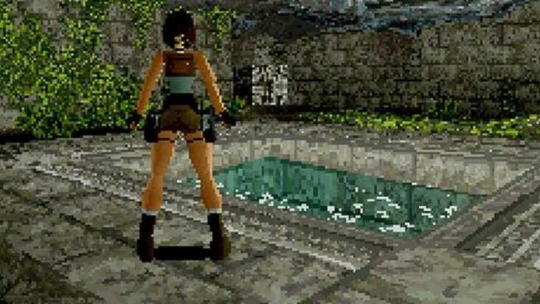
Figure 3 (Tomb Raider, (Rivera, 2022))
Critics have noted that Lara’s portrayal epitomized the industry’s conflicting attitudes toward female representation: while she represented a step forward as a competent and independent female lead, her design perpetuated the very stereotypes it sought to challenge. Despite these contradictions, Lara Croft’s popularity signaled a growing demand for female protagonists in gaming, suggesting that players were open to seeing women in more active and complex roles. Her success paved the way for more nuanced portrayals of women in future games, as developers began to explore female characters beyond superficial aesthetics. Over time, Lara’s evolution in subsequent installments saw more realistic and grounded representation of her character.
MODERN REPRESENTATION
In recent years, however, significant strides have been made to portray women in video games as multifaceted and independent characters. This shift reflects real-life cultural movements, such as #MeToo, and the increasing advocacy for inclusivity and diversity in media, which have influenced the gaming industry to rethink its portrayal of gender.
NEWER EXAMPLES OF WOMEN’S REPRESENTATION
1. Horizon Zero Dawn (2017)
A hunter and skilled warrior navigating a post-apocalyptic world overrun by robotic creatures, Aloy’s character is defined by her intelligence, resilience, and leadership rather than her physical appearance. Raised as an outcast, she demonstrates strength and determination by overcoming societal prejudice and discovering her identity. Her empathy and curiosity drive her journey, making her relatable and human rather than a one-dimensional action hero.
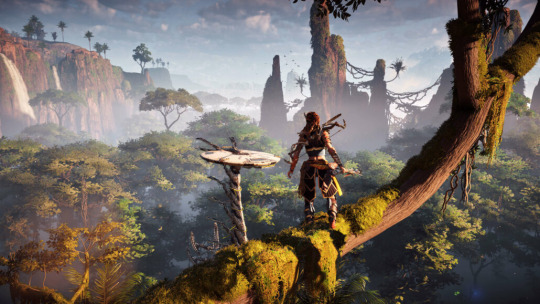
Figure 4 (Horizon Zero Dawn, (Meo, 2016))
Importantly, Aloy’s characterization challenges long-standing gender stereotypes in gaming by presenting a female lead who is neither hypersexualized nor reduced to a supporting role. Instead, she embodies qualities of leadership and problem-solving typically associated with male protagonists. This shift mirrors both real-life cultural movements advocating for diversity and inclusivity in media and the gaming industry’s response to its increasingly diverse audience. By moving beyond reductive stereotypes, Aloy becomes a blueprint for creating female characters who resonate with players on a deeper level.
2. The Last of Us Part II (2020)
The Last of Us Part II represents a significant evolution in intersectional representation within gaming, particularly through the character of Ellie Williams. As a lesbian protagonist, Ellie’s sexual orientation is intricately woven into her emotional and narrative arc, making it an essential part of her identity rather than a secondary trait. Her relationship with Dina and the challenges she faces in a post-apocalyptic world offers a portrayal of queer love that feels authentic and integral to her journey. Through Ellie, the game presents her as a multi-dimensional character whose sexuality intersects with her experiences of trauma, loss, and vengeance.

Figure 5 (The Last of Us Part II, (Howard, 2020))
Ellie’s story is crucial because it incorporates various layers of identity — gender, sexuality, and trauma — without reducing her to a singular narrative. The game pushes the boundaries of what has traditionally been seen in video games, where LGBTQ+ representation has often been sidelined or misrepresented, by offering a leading character whose sexual orientation is integral to the story. It places Ellie’s love for Dina and the fallout from their experiences at the heart of the emotional stakes, not only as a plot device but as a crucial element of her development as a person.
BROADER IMPLICATIONS AND THE FUTURE OF REPRESENTATION
The evolution of female representation in video games reflects a broader cultural shift towards inclusivity and equity. While early portrayals were constrained by gender stereotypes and commercial pressures, modern games demonstrate the industry’s growing commitment to diversity (Shaw, 2014). This progress is driven by several factors, including the increasing presence of women in game development, the growing diversity of gaming audiences, and the influence of social movements advocating for gender equity.
However, challenges remain. Issues such as online harassment of female gamers and developers, the underrepresentation of women in leadership roles within the gaming industry, and the persistence of hypersexualized character designs in certain genres underscore the need for continued progress. Achieving true gender equity in gaming requires a sustained effort to challenge entrenched stereotypes and support diverse voices both on-screen and behind the scenes.
CONCLUSION
The representation of women in video games has undergone a profound transformation, evolving from simplistic and stereotypical portrayals to more nuanced and inclusive depictions. Early examples, such as Pauline in Donkey Kong and Lara Croft in Tomb Raider, are clear-cut examples of the industry’s historical reliance on gendered tropes. In contrast, modern characters like Aloy in Horizon Zero Dawn and Ellie Williams in The Last of Us Part II reflect the growing demand for complex and diverse representations of women.
This evolution not only enhances the medium’s cultural relevance but also empowers players by providing a wider array of perspectives and experiences. As the industry continues to grow, the representation of women will remain a critical area of exploration and advocacy, shaping the future of gaming as a truly inclusive medium.
REFERENCES
Mulvey, L., 1975. Visual pleasure and narrative cinema. Screen, 16(3), pp. 6–18.
Mitra, R., 2023. GAMERANT. [Online] Available at: https://gamerant.com/best-action-games-with-female-protagonists/ [Accessed 13 December 2024].
Ivory, J. D., 2006. Still a man's game: Gender representation in online reviews of video games. Mass Communication and Society, 9(1), pp. 103–114.
Laymon, A., 2022. GAMERANT. [Online] Available at: https://gamerant.com/games-you-can-finish-in-an-hour/ [Accessed 13 December 2024].
Kennedy, H. W., 2002. Lara Croft: Feminist icon or cyberbimbo? On the limits of textual analysis. Games and Culture, 1(1), pp. 2–7.
Available at: https://neverendingrealm.com/opinion/the-10-best-games-of-1996-according-to-game-rankings/ [Accessed 13 December 2024].
Meo, F. D., 2016. WCCFTECH. [Online] Available at: https://wccftech.com/horizon-zero-dawn-gets-gorgeous-4k-trailer-screenshots/ [Accessed 13 December 2024].
Howard, K., 2020. Den of Geek. [Online] Available at: https://www.denofgeek.com/games/the-last-of-us-part-2-review-roundup/ [Accessed 13 December 2024].
Shaw, A., 2015. Gaming at the edge: Sexuality and gender at the margins of gamer culture. University of Minnesota Press, Minneapolis. Available from: ProQuest Ebook Central. [13 December 2024].
x-x-x-x-x-x-x-x-x-x-x-x-x-x-x-x-x-x-x-x-x-x-x-x-x-x-x-x-x-x-x-x-x-x-x-x-x
CLEVER USE OF AFFECT AND EMOTIONS IN MAINSTREAM GAMES
INTRODUCTION
Video games have become an increasingly influential medium that bridges storytelling, interactivity, and player engagement altogether to bring a unique, fascinating experience to the human mind. Central to this immersive experience is the portrayal of both emotions and affect. Whilst often misunderstood and subsequently conflated, these concepts have distinct roles in shaping a player’s journey through a game.
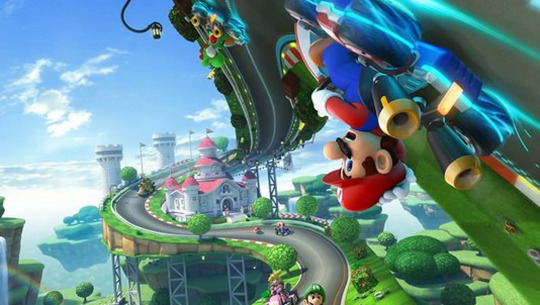
Figure 1 (Mario Kart 8, (Hidalgo, n.d.))
Emotions refer to explicit, identifiable feelings that characters experience and express. In general, emotions share traits like rapid onset, brief duration, and synchronized responses, all shaped by evolution to distinguish them from other affective states (Ekman, 1992). In video games, these emotions — happiness, anger, sadness, or fear — are often rendered through facial expressions, dialogue, and physical actions, thus creating a direct emotional connection between the character and the player.
On the other hand, affect encompasses a broader, less tangible atmosphere. Defined by Gregg and Seigworth (2009) as “intensities that pass body to body (human, nonhuman, party-body, and otherwise),” affect shapes the resonances and moods circulating between the game’s world and the player. Unlike the directness of emotions, affect operates in the liminal spaces of experience and attempts to influence how a game “feels” without necessarily being articulated.
Thus, there exists a dual contribution of emotions and affect in video games to player engagement and immersion. By exploring examples that pertain to such, it becomes evident how video games operate on multiple sensory and emotional levels to create impactful experiences.
REPRESENTATION OF EMOTION IN VIDEO GAMES
1. Detroit: Become Human
In Detroit: Become Human, the interrogation scene, where Connor confronts a deviant android about stabbing his former master, embodies a powerful representation of emotions, particularly determination and defiance.
As the deviant android exclaims, “The day shall come when we will no longer be slaves... no more threats... no more humiliation,” his voice becomes adamant and resolute. This moment is further amplified by the intensifying music, which mirrors the growing tension, building toward a climactic point. The deviant’s shift from fear to determination is not just an emotional shift within him, but an emotional contagion that spreads to the player, invoking a sense of foreboding.
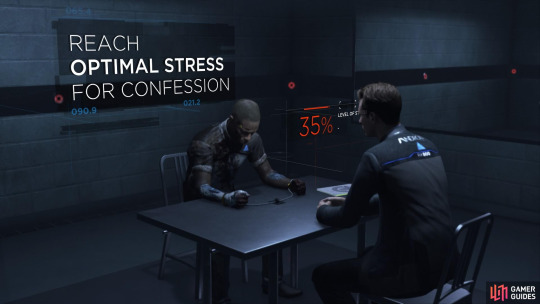
Figure 2 (Detroit: Become Human, (Hough, n.d.))
According to James Baldwin's theory of emotional contagion (1897), emotions can be transferred between individuals through expressions and reactions. Baldwin argued that emotional expressions are contagious, creating a shared emotional experience between the individual expressing the emotion and the observer. In the context of this scene, the deviant’s shift from what had once been fear and hesitation, to newfound determination, becomes a conduit for the player’s own emotions. As the deviant robot expresses his determination to break free from oppression, his emotional shift triggers a response in the player — a shift from initial discomfort or curiosity to a growing unease and anticipation of the potential consequences.
Whilst this occurs, the steady crescendo of the background music continues to mirror the deviant’s intensifying resolve, heightens the atmosphere, and drawing the player further into the emotional exchange. The player feels a deepening sense of foreboding as the situation escalates, knowing that this determination could signal a shift in the power dynamics between humans and androids. The deviant’s words and emotional state are not just confined to the narrative of the game — they actively engage the player, evoking emotions of unease, tension, and apprehension. Baldwin’s concept of emotional contagion is at play here, as the player’s own emotional state begins to mirror that of the deviant, thus amplifying the gravity of the moment.
In this way, Detroit: Become Human uses emotional contagion to create an immersive experience where the player feels not just the weight of the deviant’s words, but the tension and uncertainty of a looming conflict.
2. The Last of Us
In The Last of Us, emotions are portrayed with raw intensity, especially in the opening scene where Joel Miller, one of the protagonists of the game, is desperately holding his daughter Sarah as she dies in his arms.
The emotional climax occurs after Joel and Sara are shot at by a military soldier. In the chaos, the soldier is shot by Joel’s brother, Tommy, but Sara is gravely injured. As she lies dying in his arms, Joel’s voice trembles as he says, “I know, baby, I know,” a tender yet anguised line that reflects his overwhelming fear and helplessness in this situation. His desperate attempt to comfort his daughter, while futile, is punctuated by the soft, sorrowful guitar music that plays in the background as Sarah dies. This music, paired with a dimly lit environment, serves to further deepend the emotional weight of the scene.
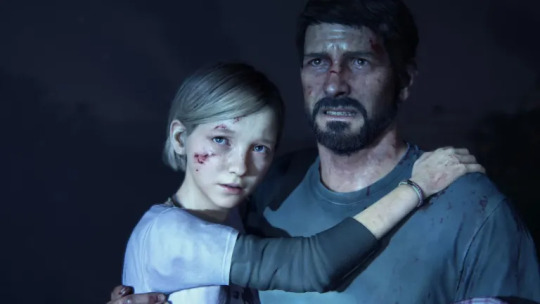
Figure 3 (The Last of Us, (Boo, 2022))
The fear Joel feels is palpable — he is afraid for his daughter’s life, as she dies in his arms. He is afraid for his own survival, due to the sudden uprising of the infected zombies. And he is afraid for the world around him, which seems to be falling into chaos and collapse. This fear is transferred to the player, who, through the intimate scene between Joel and Sarah, can experience the rawness of the moment. The dark lighting and somber soundtrack amplify the sense of impending loss, creating an emotional atmosphere that intensifies the player’s own fear and sorrow. The soft guitar playing as Sarah dies adds to the feeling of finality, and Joel’s uncontrollable sobbing further emphasizes the depth of his grief.
Hence, this scene demonstrates the contribution of emotion where fear, loss, and grief are not just told through dialogue but are embodied in the characters’ physical and emotional responses. The player’s own emotional state is shaped by the character’s expressions and the environment, making the player feel Joel’s fear and loss on a visceral level. The combination of dialogue, visual cues, and music demonstrates how The Last of Us effectively uses emotion to connect players to the narrative in a deeply personal way.
REPRESENTATION OF AFFECT IN VIDEO GAMES
1. Stardew Valley
One of the most striking representations of affect in Stardew Valley is the Dance of the Moonlight Jellies festival. This event takes place on the 28th of Summer and is a moment of tranquil beauty that reflects the game’s broader thematic atmosphere of peace and connection to nature.
The scene is defined by its serene ambiance, where the player observes the moonlight jellies gliding across the water under the gentle light of the full moon. The music, soft and melodic, creates a sense of calm and quiet reflection which evokes feelings of nostalgia and serenity within the player. The slow, harmonious tunes blend perfectly with the lighting, which casts a cool, silver glow across the scene, amplifying the quiet beauty of the jellyfish’s journey. This combination of music and lighting doesn’t explicitly point to any emotions of the characters, but it stirs a more subtle, atmospheric feeling within the player, emphasizing the peaceful nature of the moment.

Figure 4 (Moonlight Jellies Festival in Stardew Valley, (Gaming, 2017))
The environment during the Moonlight Jellies festival — where the bright jellyfish softly illuminate the dark waters — enhances the sensation of stillness and introspection. The quiet murmur of the sea, paired with the occasional distant chirp of insects, suggests a world at rest. As players watch the jellyfish float, they are drawn into the shared moment of stillness, a feeling that invites personal reflection and connection to the tranquil world of Stardew Valley. The visual and auditory elements work in harmony to create an affective experience that, while not tied directly to the emotions of the characters, deeply resonates with the player’s emotional state, promoting a quiet, almost meditative mood.
This scene is a perfect example of how affect is used in Stardew Valley — not through overt emotional narratives, but through environmental design, music, and atmosphere, fostering a sense of peace and emotional release for the player.
2. Minecraft
In Minecraft, affect is primarily conveyed through the sensory and atmospheric experiences that shape the player’s emotional engagement with the game world. So, the player’s emotional experience is often driven not by explicit storylines or character emotions, but by how the world itself feels through the senses. This aligns with Brian Massumi’s theory that affect is not a fixed emotion but a dynamic experience that emerges through bodily interaction with the world (Massumi, 2002).
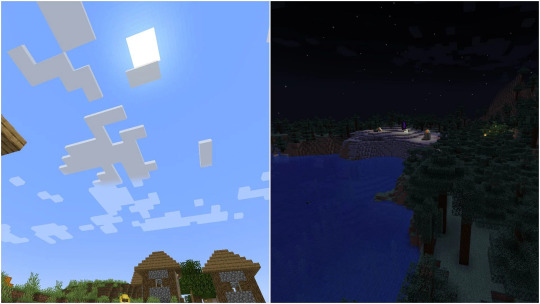
Figure 5 (Minecraft, (Kabra, 2022))
One clear example of affect in Minecraft is the transition from day to night. During the day, the bright sunlight, accompanied by the peaceful sounds of animals and birds, creates a sense of serenity and freedom. This calm, inviting atmosphere encourages exploration and creativity. As the sun sets, however, the environment undergoes a drastic shift: the sky darkens, the ambient sounds become eerier, and the world is bathed in cool, muted light. The music also changes, becoming more subtle and tense, causing growing unease within the player. The absence of animals and the presence of hostile mobs such as zombies or skeletons heightens the sense of vulnerability and foreboding.
This shift from day to night highlights how Minecraft uses affect to manipulate the player’s emotional state. The game does not rely on explicit narrative to generate these feelings but uses environmental cues like sound, light, and ambiance to create an emotional experience that the player internalizes. In this sense, Minecraft relies on affect to immerse the player in the world and evoke a visceral response without the need for overt emotional expression. This change in time also exemplifies Massumi’s concept of affect as something that is not always consciously perceived but still deeply felt through engagement with the environment.
CONCLUSION
Ultimately, the contribution of emotion and affect in video games offers players not only direct emotional experiences but also a deeper connection to the game’s atmosphere. Where emotion functions as a direct response that is shaped by the characters’ explicit feelings and actions, affect permeates the game world through subtle cues that influence the player’s mood and perception. Together, these elements create a unique and well-rounded experience that allows video games to engage players on both emotional and atmospheric levels.
Emotions, in their immediate and identifiable nature, offer players a tangible connection to the characters’ experiences. These moments of fear, joy, or grief resonate with the player, drawing them into the narrative and fostering empathy through the character’s journey. The emotional intensity often sparks a shared experience between the character and the player and enriches the narrative with a sense of immediacy.
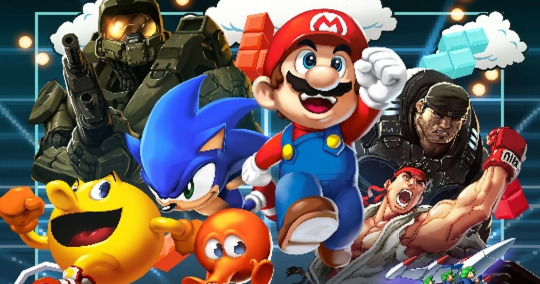
Figure 6 (Video Games, (Matheson, n.d.))
In contrast, affect operates on a more nuanced level as it influences just how the game world “feels” without overtly defining the emotions of the characters. It shapes the mood of the game through environmental factors such as sound, lighting, and atmosphere, thus allowing for a more holistic experience that subtly impacts the player. This broader emotional resonance encourages reflection, tranquility, or unease, often without the player consciously recognizing the source.
This blend, then, creates a complex interplay that allures players both cognitively and sensorially. By utilizing these two concepts in tandem, games have the ability to evoke a wide range of responses — from emotional investment in the characters to a more in-depth connection with the game’s world. As games continue to evolve, their capacity to convey both emotion and affect will remain central to their ability to create immersive, impactful experiences that resonate long after the screen fades to black.
REFERENCES
Available at: https://eu.usatoday.com/story/tech/gaming/2014/12/22/best-video-games/20749491/ [Accessed 31 December 2024].
Ekman, P., 1992. An argument for basic emotions. Cognition and Emotion, 6(3-4), pp. 169–200.
Gregg, M. and Seigworth, G. J. (eds.), 2010. The affect theory reader. Durham: Duke University Press.
Hough, J., n.d. GAMER GUIDES. [Online] Available at: https://www.gamerguides.com/detroit-become-human/guide/walkthrough/chapter-1/chapter-8-the-interrogation [Accessed 31 December 2024].
Baldwin, J. M., 1897. Social and ethical interpretations in mental development: A study in social psychology. New York: MacMillan Co.
Boo, B., 2022. DEN OF GEEK. [Online] Available at: https://www.denofgeek.com/games/the-last-of-us-prologue-analysis-retrospective-breakdown-masterpiece/ [Accessed 31 December 2024].
Gaming, d. L., 2017. deKay's Lofi Gaming. [Online] Available at: https://lofi-gaming.org.uk/diary/2017/10/stardew-valley-switch/ [Accessed 31 December 2024].
Massumi, B., 2002. Parables for the Virtual: Movement, Affect, Sensation. Durham: Duke University Press.
Kabra, A., 2022. sportskeeda. [Online] Available at: https://www.sportskeeda.com/minecraft/how-day-night-cycle-work-minecraft [Accessed 31 December 2024].
Matheson, W., n.d. USA TODAY LIFE. [Online] Available at: https://eu.usatoday.com/story/popcandy/2014/07/15/video-games-documentary/12672221/ [Accessed 31 December 2024].
x-x-x-x-x-x-x-x-x-x-x-x-x-x-x-x-x-x-x-x-x-x-x-x-x-x-x-x-x-x-x-x-x-x-x-x-x
0 notes
Photo







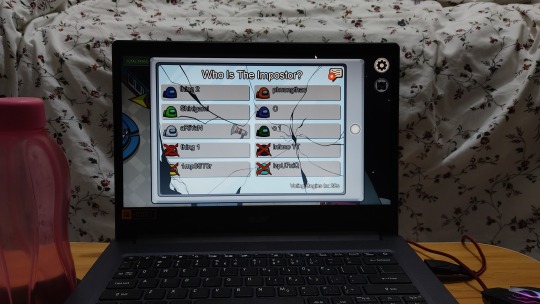
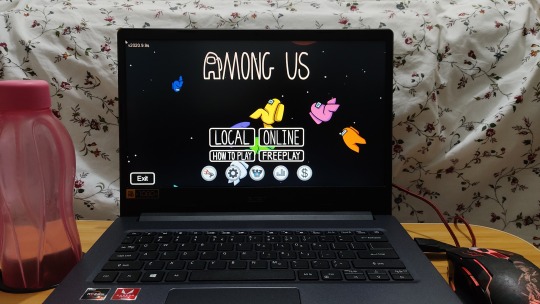



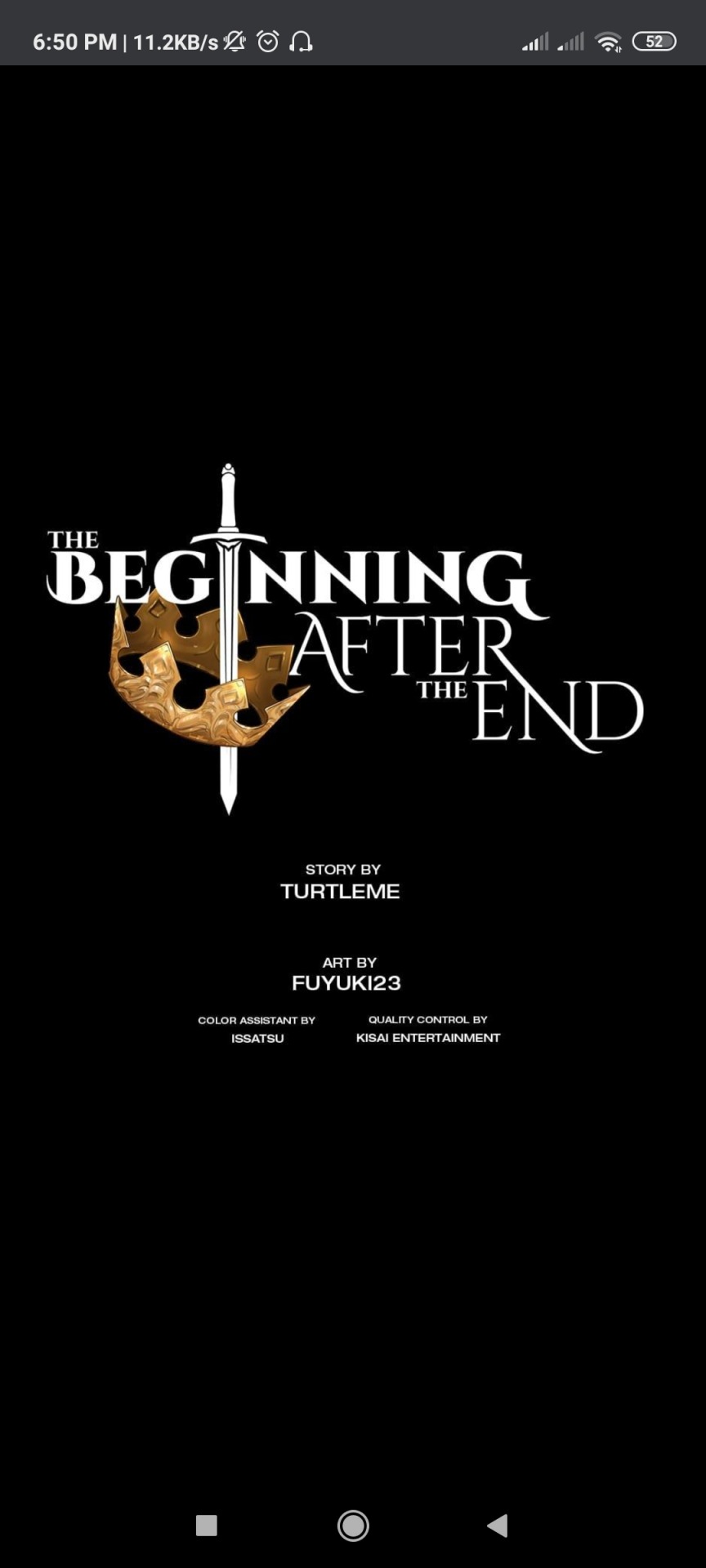


Hobbies are innate to every human and there are different types of them. The first one is with us while growing up, and the other is through specific circumstance/s such as environment or peers. Everyone has their own set of hobbies because of those factors, factors that affect their thinking and decision-making in life.
The same as other people, I become fond of cats, foods, games, appreciating beautiful sceneries, reading, and listening to music while doing the things that I listed previously. Nonetheless, hobbies are meant to be done in free time, and in moderation to not affect the things that are vital to our lives.
Capturing precious moments is a thing that most people do, especially with the developing and progressing technology of cameras that some phone maker companies are striving for to win-over the consumers. Be that as it may, I’m now termed as a cat person because of my hobby of taking and collecting their pictures as I totally adored those walking balls of fur. Taking pictures of foods are the things that all-ages do, whether to flaunt how wealthy they are or how good they cooked, I'm certainly at the latter for our family enjoys the simpler things in life. Capturing breathtaking views also astonishes me like things were perfectly orchestrated by Him like sceneries will always be beautiful to satisfy not only mine but most enthusiasts.
Most people, now especially because of the on-going pandemic, are resorting to discovering how to enjoy life indoors, either playing games, or reading. I got hooked up again into games and reading as I’m not allowed to go out because of my age and prolly there’s nothing to do, well most of the reason is the latter part. Either way, listening to music while playing or reading is also my go-for as it adds thrill or spice especially if the music coincidentally coincides with the mood of the book.
There’s absolutely nothing wrong if your hobbies are different from other people or your family. Although they might think that you're different from them as a person at least you’re true to your desire and also to yourself. There’s also nothing wrong with being afraid of judgement from other people but hobbies don't define you as a human, because it's only meant for your amusement
1 note
·
View note
Text
Object. Space. Perforation.
Entry One: The Second of July, Two Thousand and Eighteen.
Throughout the academic year, I have anticipated the need to address an effective way to document research ideas during the crucial, summative stages of the MSc programme. However, as the final months of the 17/18 academic year are drawing near, and I am still trying to work out the answer…Am I going to Blog This Thing?
Or more, precisely, ‘How am I Going to Blog This Thing?’
Initially, my apprehension towards this approach of ‘publicly’ documenting embryonic research notes; preliminary speculations and opening thoughts, has risen from the fear that, in these early stages - I’m not absolutely certain about what I want to say. More than anything, I’m worried about making a claim that I might regret and want to retract. What if I send it out into the ether and then find out that I’m wrong? Would that be embarrassing or not?
Despite these uncertainties, I have realised that using my (ever sleepy) Tumblr account as a primary locus for self-reflection throughout the project, will hopefully serve to underpin the action-research nature of the intervention. Additionally, it might be nice to have a sort of archive that allows me to chart how my project evolves over time. This provides an insertion point for me to note that, due to the personal, idiomatic nature of the Tumblr blog, I will not be avoiding colloquial or informal writing in these entries.
The structure of the blog entries to follow will be in the form of critical self-reflection and refractive musing on/between a series of research interventions. Specifically, these interventions will be in the form of improvisation as network generation. Put simply, I will perform a series of ‘jam’ sessions in the DAW and then reflect on the central role of nonhuman actants during these improvisations. These blogs, unlike the formal written element to the project (dissertation) will not critique the approach through theoretical/contextual scholarly writing. Rather, the blog entries serve as a vehicle for in some way articulating the unassailable, futural nature of sonic experience.
0 notes
Photo

Matthew Lewis' (1775-1818) is synonymous with his 1796 novel, 'The Monk'; so much so that he's more commonly called 'Monk Lewis' than Matthew. 'The Monk' is a scandalous, perverse, and highly entertaining novel that revels in religious rebellion and condemnation of the Catholic church. Religion is a theme often discussed, subverted, and criticised in gothic literature. Follow The Gothic: What? to find out what else the gothic genre entails. #generallygothic #gothic #thegothicwhat #gothicblog #academicblog #matthewlewis #monklewis #themonk #novel #englishliterature #gothicliterature #classicliterature #literarycriticism #literarytheory #religion #catholicism #catholic #religiousrebellion #litlover #litnerd #booklover #bookworm #academic
#academic#monklewis#gothicblog#classicliterature#englishliterature#thegothicwhat#generallygothic#gothicliterature#litnerd#bookworm#litlover#novel#catholic#religion#religiousrebellion#academicblog#themonk#catholicism#booklover#gothic#literarycriticism#literarytheory#matthewlewis
0 notes
Text
wanna turn half my thesis into a publishable article abt queer mythmaking, lads
1 note
·
View note
Photo

Up-to-date scientific research findings are not just found in journals. For a variety of reasons, more and more academic researchers are finding time during their busy days to read and even write science blogs. This trend is on the rise and creates new opportunities for scientists to share their research and engage with the public.
In a 2015 survey of scientists who use social media, 92 percent indicated that they read science blogs. And according to a 2014 survey of more than 600 science bloggers, 47 percent identified themselves as working in academic research, indicating that blogging has become more of an accepted practice at universities.
The number of science blogs seems to also grow daily. The site ScienceSeeker.org has links to more than 2,300 blogs and other science news sources. The diversity of science blogs includes the more commonly covered biology and climate science and also topics such as paleontology, political science and astronomy.
Reasons for blogging vary, but include the ability to explain science; draw attention to science that is not normally covered in mainstream media, and the opportunity to share one’s work with colleagues. While research in this area is limited, there is some indication that scientists who do promote their work through social media do receive more citations based on a study of nanotechnology researchers.
For those who wish to join the “blogosphere” there are some points for how to make the most of that effort. First, identify the role of your blog. Do you want to promote scientific information in general; share insights with colleagues; highlight research from your lab; or try to explain current scientific discoveries covered in the news. The best blogs do have a “voice” or specific role for which those who read it come to expect. Also make sure to identify who you are and your scientific expertise.
How content is provided in the blog is also important. Photos and videos are easily shared by others through social media and help provide interest. People always like to hear stories, so sharing the story behind a discovery or anecdote about personal experience can make it more interesting. Practical information or “how to” advice is also popular.
There are numerous resources on the web to also help you determine what platform to use (WordPress, Blogger or Tumblir for example) and how to promote your blog.
As most people now get their science information from the web, blogging is a great addition to traditional science news coverage. It can add interest, clarify, highlight and reach new audiences with science information.
– Beth Forbes, director of science communication, College of Agriculture ([email protected])
(via BLOGGING: IT’S ACADEMIC – Dimensions of Discovery)
0 notes
Text
10. Pushing Limits - How far can virtual reality really go?
We are constantly outperforming ourselves in the field of technologic advancement all the time, we as humans strive to make advancements in this sector all the time, ever so slightly improving everything we have created, since it’s been created. Every single newer model of the iPhone has a slightly better camera each time, but its not just Apple who strive for this, it’s all technology.
It begs the question, when does it end? Will it ever end? Is there an end goal? We will ever reach a point where we say to ourselves, “Okay, I don’t think we can improve this anymore”. In my opinion, no, I believe we as a human race will continue forever to make it just that little bit better, squeezing every last part of new technology out. We will continue to innovate, achieve beyond what we think is capable right now, and to this theory I want to use Virtual Reality as an example, from what it was to what it is now, and how far it could really go.
Virtual Reality, or VR as its also known, is a simulation, where the user can immersive themselves in a virtual world through the use of 3D near-eye displays and pose tracking, originally created in 1968 by computer scientist Ivan Sutherland and Bob Sproull's. This was the first instance of a head mounted display, connected to a computer that the world had ever seen called the Sword of Damocles. The head mounted contraction was anchor to the ceiling as it was too heavy to be supported by just the user themselves. As it was connected to the computer, the computer generated very basic wireframe graphics that the user could see.
If we fast forward to now and look at the differences between todays VR headsets and the sword of Damocles, the technological advancement is breathtaking, the hardware continues to improve, users can now wear comfortable headsets, and more ergonomical. The resolution is still increasing, with some headsets boasts and impressive 3840x3840 QLED panels per eye. All of these features of VR are still evolving, we as consumers are able to put on a headset and jump into a virtual world seeing and hearing everything around us, the realism is and immersion can be intense, but does it have to stop there?
I mentioned earlier about how far virtual reality can go? Would we be able to fully immerse ourselves in a virtual world totally, there are still barriers yet to be broken, when we put the headset on, we can see and hear everything in virtual reality, is it only time when we can smell things too? Or touch things, maybe even taste? These senses in my opinion are what shapes the very fabric of what reality is, its things you can see, feel, taste and touch, its an object you can physically see or feel in the present. VR is virtual realism, it’s a simulation of the reality we understand it to be, so if we could fully immersive ourselves in a virtual space with all of the notions attached to, could it essentially replace our own version of reality?
I think, honestly, yes, I think the technologic advancements we have made and seen through the years, have come so far, and as humans always strive to do better, could break through our own vision of reality. There are no hard physical limits to VR, only from our own ability to interact with the brain, if we were to solve that, then VR could become indistinguishable from reality.
Bibliography
3Darchstuffs, 2023. Hardware Limitations of VR and Its Relevance in Commercial Projects. [Online] Available at: https://3darchstuffs.com/blogs/news/title-hardware-limitations-of-vr-and-its-relevance-in-commercial-projects?srsltid=AfmBOooafId9qbSo31q3nf87OldItkst5_PRnfNurlak-WYH2nqaIVng [Accessed April 2025].
Barnard, D., 2024. History of VR – Timeline of Events and Tech Development. [Online] Available at: https://virtualspeech.com/blog/history-of-vr [Accessed April 2025].
https://pimax.com/pages/pimax-crystal-super?srsltid=AfmBOorQeKSozOOOWjRI4jdTdQWC1wF1sMYZI-GweHOjcD7kiymE1k5Q
https://en.wikipedia.org/wiki/Virtual_reality
https://www.vrs.org.uk/virtual-reality/history.html#:~:text=In%201968%20Ivan%20Sutherland%20and,computer%20and%20not%20a%20camera
0 notes
Text
Sources and Significance (Academic Blogs)
Propp's Theory in Kingdom Come: Deliverance [Spoilers for KCD]
What is Kingdom Come: Deliverance?
In 2018, Warhorse Studios released Kingdom Come: Deliverance, an action role-playing game co-published by Deep Silver. This game places a high value on historically authentic content, as it is set in the medieval kingdom of Bohemia, an Imperial State of the Holy Roman Empire. The game is well received, with a strong reputation in the RPG genre and multiple awards to its name. The company has released five DLC packs for the basic game, and a sequel is expected to be released in early 2025.
Kingdom Come: Deliverance stays faithful to its genre, with a rich tale that is heavily influenced by the choices players make during gameplay. The fundamental ideas of Propp's theory can still be applied to this game, despite the fact that various players have varied experiences that could alter the game's plots.
Characters - Propp's Theory
Vladimir Propp (1928) stated that characters may be characterized by their role they play in the story's growth. He developed this theory after an extensive and in-depth examination of 100 distinct folktales. Since Kingdom Come: Deliverance is a very unusual role-playing game with many twists and turns, it was quite challenging to tie the characterization of various character storylines together and fit them in because this is an extremely old and out-of-date notion. However, parts of Propp's character narratives are perfectly suited to the gaming ecosystem and may still be utilized to describe character archetypes that appear regularly in both modern fiction and nonfiction.
As discussed by Dogra (2017), Propp identified these characterizations as the hero, the villain, the princess, the dispatcher, the helper, the donor and the false hero.
Propp's Theory in Kingdom Come: Deliverance
A short look at Propp's Theory of Character Narratives reveals two sub-categories for the hero archetype: seeker and victim. Whereas the seeker sets out to rectify every terrible wrong done by the villain, the victim is an archetype who suffers directly at the behest of the antagonist.

Figure 1 (Henry of Skalitz, (Kingdom Come Deliverance Wiki, n.d.))
Henry of Skalitz fills the role of hero in KCD. Henry is an intriguing character, but he is not the most ideal hero; there are far better options in other games. However, given the context of KCD, I believe Henry makes an excellent realistic hero. He easily fits the mold of a hero archetype, frequently standing up for the poor and oppressed in addition to striving to build his own character through acting on what he believes is best for his friends, family, town, and king. While players can choose to be as good as the books or as crooked as they like, which can sometimes skew the player's narrative of his image throughout the game, Henry is undeniably a hero.

Figure 2 (Bianca, Kingdom Come: Deliverance, (Kingdom Come Deliverance Wiki, n.d.))
Bianca from Skalitz is a supporting character in KCD. She was a merchant who worked as an alehouse maid at her family's pub and was Henry's true love. Her character apparently plays the role of a princess at first, until she is slaughtered alongside the townsfolks by the Cumans, led by Sir Markvart von Aulitz. This required significant introspection, and after a lot of thought, I picked another NPC that plays the role of princess in Kingdom Come: Deliverance.

Figure 3 (Theresa, Kingdom Come: Deliverance, (Kingdom Come Deliverance Wiki, n.d.))
Theresa is a key character in Kingdom Come: Deliverance and the protagonist of the DLC A Woman's Lot. The archetype does not necessarily allude to her as a regal character; rather, she is a commoner who works at her family's mill. While fleeing on horseback, the player has the option to save her from the Cumans attempting to sexually assault her by whistling, initially portraying her as a damsel in distress. She is a refreshing character because she frequently assists Henry throughout the plot and plays an active role. She is brave and provocative, and she knows more about love than Henry, who seems quite clueless. Being a devout Christian, as was required of a respectable woman in that era, she is also extraordinarily courageous, bright, and strong-willed, which makes her a dynamic, well-rounded character in the game.

Figure 4 (Sir Istvan Toth, Kingdom Come: Deliverance, (Kingdom Come Deliverance Wiki, n.d.))
Sir Istvan Toth appears as the major villain in Kingdom Come: Deliverance, posing a constant threat to Henry and his comrades, as well as the lord they serve. He was a Hungarian nobleman who resided in Sasau in 1403. Very little is known about his past, but we do know that King Sigismund of Luxembourg elevated him to the status of nobility and welcomed him to his court. During the quest The Die is Cast, Henry is imprisoned, and Istvan confesses that he and King Sigismund are conspiring to weaken the local lords and terrorize the citizens in order to bring the existing reign to an end. As Sigismund ascends to the throne of Bohemia, he will reward Istvan with all of Sasau in recognition of his faithfulness.

Figure 5 (Sir Radzig Kobyla, Kingdom Come: Deliverance, (Kingdom Come Deliverance Wiki, n.d.))
Sir Radzig Kobyla is an excellent fit for the role of dispatcher in KCD. He is the primary voice in directing Henry to his goals and rewarding him when necessary. He was the Lord of Skalitz and a devoted Hetman to King Wenceslas IV of Bohemia. A commanding, respected, and accomplished diplomat who can handle himself effectively in a fight but prefers to negotiate with his opponents, he takes a special interest in Henry when his parents are slaughtered in the aftermath of the Cuman invasion.

Figure 6 (Sir Hans Capon, Kingdom Come: Deliverance, (Kingdom Come Deliverance Wiki, n.d.))
Although Sir Hans Capon first irritates Henry in KCD, their relationship develops into something more than just a friendship later in the playthrough. Henry frequently saves him, and the two have some amusing banter. He plays the part of the helper in the later levels, helping Henry with various quests and frequently giving him useful information about enemy camps or advising him (more like teasing) on his proficiency with the bow. However, it is worth noting that there are numerous NPCs who assist our hero in some way during the game. This demonstrates that Propp's theory could potentially be adapted to emerging norms while maintaining the fundamental bases of character narratives.

Figure 7 (Captain Bernard, Kingdom Come: Deliverance, (Kingdom Come Deliverance Wiki, n.d.))
The donor in the KCD setting might be any number of food sellers, weapon and armor smiths, or stable boys that assist Henry in his arduous path of ascending through the ranks and defending his liege. However, conceptually speaking, there is one NPC in the game who meets the criteria. A recurrent figure in Kingdom Come: Deliverance, Captain Bernard leads the Rattay city guard. He swears loyalty to Sir Hanush of Leipa. He plays the role of a donor, teaching Henry the principles of weapon warfare, as well as how to combo attacks and launch master strikes. He also treats Henry's health issues following sparring sessions. If Henry did not receive guidance from Captain Bernard, the plot of the game would not advance because weapon battle becomes a primary part of the game and Henry would not survive a single day without it. Bernard's assistance enables Henry to enhance his weapon combat skills and work on perilous quests and objectives assigned to him by his liege.
Eventually, we arrive at the archetype of the false hero. A false hero, outlined by Propp, is a character that looks to be good at first but later reveals themselves to be working against the hero's or other characters' best intentions. This looks to be one of the few instances in which I am unable to identify an NPC who serves as the fake hero. Sir Istvan Toth is first seen visiting Skalitz as a guest, accompanied by Sir Radzig Kobyla, who shows him about. Toth was later proven to have played a critical role in the Cuman forces' invasion of Skalitz and several nearby villages. Toth, Henry, and Radzig were never on cordial terms to begin with, therefore it is difficult to distinguish him as a false hero. I strongly believe that this is where Propp's theory falls short because Toth's betrayal was not a betrayal in the least because he was simply serving his liege and doing what he was told to do, and the majority of the NPCs in Kingdom Come: Deliverance are viewed as allies for either their monarch or the other.
Conclusion
When compared to contemporary norms, Propp's theory is incoherent; either it fails to provide fresh character narratives or it allows for more people to play the same narrative roles. It does, however, enable adaptation to modern audiences while offering the characters greater complexity, versatility, and depth when utilized as a guide rather than as a rule. When utilized with Kingdom Come: Deliverance, this theory works well for the majority of character archetypes and narratives that serve as the framework for a story, but it needs room to accommodate new character narratives that suit new archetypes.
REFERENCES
Propp, V., 1968. Morphology of the Folktale: Second Edition. University of Texas Press. Available at: https://doi.org/10.7560/783911 [Accessed 8 November 2024].
Dogra, S., 2017. The thirty-one functions in Vladimir Propp’s Morphology of the Folktale: An outline and recent trends in the applicability of the Proppian taxonomic model. Rupkatha Journal on Interdisciplinary Studies in Humanities, 9(2). Available at: https://doi.org/10.21659/rupkatha.v9n2.41 [Accessed 8 November 2024].
Kingdom Come Deliverance Wiki, n.d. Kingdom Come Deliverance Wiki. [Online]
Available at: https://kingdom-come-deliverance.fandom.com/wiki/Henry
[Accessed 08 November 2024].
Kingdom Come Deliverance Wiki, n.d. Kingdom Come Deliverance Wiki. [Online]
Available at: https://kingdom-come-deliverance.fandom.com/wiki/Henry
[Accessed 08 November 2024].
Kingdom Come Deliverance Wiki, n.d. Kingdom Come Deliverance Wiki. [Online]
Available at: https://kingdom-come-deliverance.fandom.com/wiki/Bianca
[Accessed 08 November 2024].
Kingdom Come Deliverance Wiki, n.d. Kingdom Come Deliverance Wiki. [Online]
Available at: https://kingdom-come-deliverance.fandom.com/wiki/Theresa
[Accessed 08 November 2024].
Kingdom Come Deliverance Wiki, n.d. Kingdom Come Deliverance Wiki. [Online]
Available at: https://kingdom-come-deliverance.fandom.com/wiki/Istvan_Toth
[Accessed 08 November 2024].
Kingdom Come Deliverance Wiki, n.d. Kingdom Come Deliverance Wiki. [Online]
Available at: https://kingdom-come-deliverance.fandom.com/wiki/Radzig_Kobyla
[Accessed 08 November 2024].
Kingdom Come Deliverance Wiki, n.d. Kingdom Come Deliverance Wiki. [Online]
Available at: https://kingdom-come-deliverance.fandom.com/wiki/Hans_Capon
[Accessed 08 November 2024].
Kingdom Come Deliverance Wiki, n.d. Kingdom Come Deliverance Wiki. [Online]
Available at: https://kingdom-come-deliverance.fandom.com/wiki/Bernard
[Accessed 08 November 2024].
x-x-x-x-x-x-x-x-x-x-x-x-x-x-x-x-x-x-x-x-x-x-x-x-x-x-x-x-x-x-x-x-x-x-x-x-x
The Role of Transmedia in Star Wars
Star Wars, as one of the most iconic and popular transmedia universes, causes people to light up and revert to their childhood selves. Since George Lucas first introduced audiences to Luke Skywalker, Darth Vader, and Han Solo in 1977, the Star Wars universe has become one of the most attractive franchise in entertainment history, grossing more than $10 billion worldwide (Devan Coggan, 2024). As fascinating as it seems, Star Wars has profited significantly from its ongoing comic books, animation series, memorabilia, video games, and more, establishing it as one of the world's most renowned transmedia properties.

Figure 1 (Star Wars, (wallup.net, n.d.))
Transmedia Storytelling, What is it?
According to Henry Jenkins (2007), transmedia storytelling investigates the idea that important story elements of a fiction are circulated methodically across numerous media channels, resulting in a seamless integrated entertainment experience. The essence of this method is that each tale told through those sources contributes to the main story and worldbuilding of that specific fiction, and no single media channel gives all of the information critical to understand the story as a whole. In addition to being essential for advancing the plot and providing storylines and narratives for future media releases, all of the most recent animation episodes, newly published comics, and computer games serve as original story entries that directly contribute to events in the Star Wars main universe.
As discussed by Henry Jenkins (2003), when pushing for transmedia storytelling, we end up with creations that are very redundant allowing no inclusion of a new character or a fresh story narrative and confusing contradictions with its former works that ends up disappointing the audience. Since no one wants to watch mediocre novelizations, this is one of the primary reasons why sequels and franchises in general have a poor image in Hollywood.
Star Wars and Transmedia Storytelling
As successful as it is, here is also where it becomes too confusing for the average spectator to follow the Star Wars tale. Star Wars: The Acolyte is a good illustration of how transmedia narrative works in the Star Wars universe. It is a new 2024 Disney+ series that serves as an installment in the franchise. However, in terms of historical priority sequence, this series is set near the end of the High Republic era, which precedes the entire Skywalker tale (another perplexing choice), making it difficult for a casual viewer to follow up. Jenkin's foundations of transmedia gone awry can be easily shown here, since it garnered a 4.1/10 IMDB rating and a 67/100 Metacritic rating, making it a poorly regarded transmedia. The first two episodes of the series show potential by introducing new ideas and pondering over complicated topics, but they fail to establish depth and contribute to the worldbuilding of the Star Wars universe.

Figure 2 (Star Wars: The Acolyte, (Klaiber, 2023))
We can also spot an intriguing tendency in the release dates of many Star Wars films and episodes. Since one came out after the other, you would think that would establish its chronological priority order, but that is completely untrue. Not to give anything away, but the plot of Star Wars Episode I: The Phantom Menace, which aired in 1999, revolves around a young Anakin Skywalker who, ideally, will be selected to restore balance to the force. Star Wars Episode II: Attack of the Clones is the second installment in the series and is set ten years after the events of The Phantom Menace. It follows an older Anakin Skywalker and Obi-Wan as they face horrific threats in the galaxy. You'd think that the next instalment would be the series' chronological trilogy, but it took two different animated series, Star Wars: Clone Wars (2003) and Star Wars: The Clone Wars (2008), before the final trilogy, Star Wars Episode III: Revenge of the Sith, concluded the prequel trilogy of the main Skywalker saga.
While the original animated series introduced versatile and dynamic characters and contributed to the plot of the original Skywalker timeline, it is already confusing enough for a fan to keep up with all of the events that occur, so we can only imagine the horror an average viewer must endure before they can concisely understand what's happening on the screen. Transmedia storytelling can help increase their audience's reach by appealing to unknown demographics, but it also breaks the line that individuals must digest the entire full content before watching the current installment just so they can understand who is whose son or who married whom or who stole the saber.

Figure 3 (A perfect representation of a new Star Wars viewer, (ChiefTheTief, 2017))
When it comes to transmedia storytelling, there is a fine line to walk. As it expands into more and more media channels, it becomes more difficult for anyone to follow and devote their time to, as people may argue that they could be doing something more productive rather than sitting on the couch and watching a plethora of movies and series for more than 10 hours. If the main timeline for a media channel is designated as the primary timeline, and other transmedia outlets for the same may be classified as supplementary storytelling, we should be able to address the issue of other transmedia affecting the main narrative. However, as Jenkins pointed out, if we did this, we would wind up with shallow worldbuilding, repeating characters with redundant cliches, and poor narrative progression.
We can see that, while transmedia storytelling is an excellent tool for strengthening story plots, worldbuilding, and defining pleasurable tales for the audience, it can also be detrimental if employed just as a money-making strategy, particularly by major Hollywood studios. In order to guarantee viewer satisfaction and allow the audience to enjoy the franchise in all its splendor, the idea of transmedia should be carefully considered and balanced while keeping in mind the dangers of oversaturating narratives, creating irregular plots, and adding new elements to the main story.
REFERENCES
Devan Coggan, T. A. J. M., 2024. Entertainment. [Online]
Available at: https://ew.com/star-wars-movies-box-office-results-8651778
[Accessed 10 November 2024].
Available at: https://wallup.net/star-wars-fan-art-5/
[Accessed 10 November 2024].
Jenkins, H., 2007. Pop Junctions. [Online]
Available at: https://henryjenkins.org/blog/2007/03/transmedia_storytelling_101.html
[Accessed 10 November 2024].
Jenkins, H., 2003. MIT Technology Review. [Online]
Available at: https://www.technologyreview.com/2003/01/15/234540/transmedia-storytelling/
[Accessed 10 November 2024].
Klaiber, R., 2023. KINOCHECK. [Online]
Available at: https://kinocheck.com/news/quo0fg/star-wars-the-acolyte-series-preview
[Accessed 10 November 2024].
ChiefTheTief, 2017. Reddit. [Online]
Available at: https://www.reddit.com/r/PrequelMemes/comments/81ncxc/when_someone_points_out_the_clones_dont_attack_in/
[Accessed 10 November 2024].
x-x-x-x-x-x-x-x-x-x-x-x-x-x-x-x-x-x-x-x-x-x-x-x-x-x-x-x-x-x-x-x-x-x-x-x-x
The Evolving Representation of Women in Literature: A Historical Analysis
INTRODUCTION
The portrayal of women in literature holds significant power, not only shaping cultural perceptions but also influencing how individuals understand their own identities within a societal framework. Literature serves as a mirror to society as it reflects prevailing ideologies while simultaneously either challenging or reinforcing them. Throughout history, the representation of women in literature has evolved, mirroring shifts in social, political, and cultural ideals. Early literary depictions often relegated women to stereotypical roles that either uphold traditional values or punished transgressions.

Figure 1 (Illustration of the portrayal of women in early literature, (Everystory Sri Lanka, 2021))
Yet, over time, women in literature began to be represented as fully realized individuals, each with unique aspirations, desires, and conflicts. These evolving portrayals tend to reflect broader societal changes based on the time periods such portrayals were created on — women’s increasing access to education, the rise of feminist movements, and shifts in the public’s understanding of gender and power. From the simplistic, archetypal depictions of women in ancient texts to the complex, intersectional characters of modern literature, female representation has transitioned from passive objects in male-driven narratives to active, autonomous agents. As these representations shift, they offer a window into the history of gender dynamics as well as a critical platform for examining current struggles surrounding women for equality, social justice, and self-determination.
EARLY REPRESENTATIONS OF WOMEN IN LITERATURE
Historically, early literature offered limited roles to women and often reflected patriarchal values. In ancient Greek epics like The Iliad and The Odyssey, women are portrayed as either virtuous or dangerous. For instance, Penelope embodies loyalty, waiting for Odysseus to return, whilst Helen of Troy embodies chaos and temptation. These depictions align with the idea of women as being either angels or demons, with little room for any complexity or dynamics. The concept of women as tools in men’s narratives is also present in these epics, which further reinforces the patriarchal structure. Women are not shown to have their own autonomy or desires, and their fates are often determined by male characters, like Odysseus’s control over Penelope’s choices or Menelaus’s anger over Helen’s affair.

Figure 2 (Early illustration of witches, (Meghan, 2017))
Such portrayals, according to Berger’s (1972) Ways of Seeing, align with early notions of the “male gaze,” where female characters exist primarily to serve men’s narratives. This concept, later discussed by Mulvey (1975), suggests that visual and literary representation has historically positioned women as objects to be looked at, often without agency or autonomy. This representation of women as passive subjects reflects a larger societal tendency to value women based on their physical appearance or their relationship to male characters. Mediaeval literature, for example, also often casts women in similar archetypes of “virgins” or “witches,” further reflecting the moral and social ideas of the time that sought to control and define women’s roles within society.
THE RISE OF FEMALE VOICES AND THE VICTORIAN ERA
In contrast, the Victorian era saw a marked shift in how women were depicted in literature. Authors like Charlotte Brontë and Jane Austen began to challenge the era’s limited views on femininity by focusing on female autonomy and subjectivity. In Jane Eyre (1847), Brontë explores a protagonist who defies gender norms by asserting her independence and challenging male authority figures. Jane’s rejection of submission, seen in her refusal to marry Mr. Rochester until their relationship is based on equality, disputed with Victorian ideals of female passivity. This shift moves beyond mere depictions of women’s beauty or chastity and focuses instead on their capacity for self-determination, ambition, and intellectual equality.

Figure 3 (Woman leading a meeting brief, (Palumbo-Seidel, 2022))
Similarly, Jane Austen’s Pride and Prejudice (1813) subtly critiques the limited roles women were expected to play in marriage and society. Elizabeth Bennet is presented as a sharp, independent woman whose intelligence and wit challenge the typical “angel in the house” ideal, which praised women who were submissive and self-sacrificial (Showalter, 1977). Her refusal to marry Mr. Collins, despite the societal pressure, and her complex interactions with Darcy emphasize her autonomy and greatly oppose the limitations of the time’s marriage market. The era also witnessed an increasing focus on the emotional and intellectual interiority of women in literature, paving the way for feminist critiques of gender roles. The rise of female voices during this period brought a shift from women seen as mere objects of male desire or vessels for reproductive function, to active agents within the narrative.
MODERNIST AND POSTMODERN SHIFTS: BREAKING STEREOTYPES
The 20th century brought further transformations in how women would be depicted in literature, as modernist authors such as the likes of Virginia Woolf pushed for more psychological depth and dynamics in female characters. In her novel Mrs. Dalloway (1925), Woolf details the complex interiority of Clarissa Dalloway, who struggles with the conflict between her desires and societal expectations. Woolf’s exploration of such a female identity in a post-war society challenges traditional notions of femininity, as Clarissa wrestles with her past and her present as she contemplates marriage, sexuality, and personal freedom. The novel thus epitomizes the shifting boundaries of gender representation, as women continued to become free from simple roles, instead being depicted as multi-dimensional and layered.

Figure 4 (Female contemporary artists, (Sheets, 2016))
This period laid the foundation for postmodern representations of women in literature, where authors began to question not only traditional narratives but also the structures that sustained them. Margaret Atwood’s The Handmaid’s Tale (1985) is one such book that critiques patriarchal control by depicting a dystopian world where women’s autonomy is suppressed and their roles are rigidly defined. Atwood explores the mechanisms of power and control, showing how societal norms enforce the suppression of women’s rights and agency. Through the character of Offred, Atwood challenges the notion of women as passive objects and underlines the importance of resistance and autonomy. In this way, both Woolf and Atwood have been able to represent a radical departure from earlier, simplistic depictions of women, instead offering complex, multi-faceted portraits of female experiences.
CONTEMPORARY REPRESENTATION: INTERSECTIONALITY AND NEW PERSPECTIVES
In recent decades, literature has embraced a more intersectional approach, reflecting the ways in which race, class, sexuality, and gender intersect in the lives of women. Writers like Chimamanda Ngozi Adichie and Toni Morrison have expanded the scope of female representation, addressing how women’s experiences are shaped by multiple, intersecting identities. In Americanah (2013), Adichie tells the story of Ifemelu, a Nigerian woman who navigates issues of race, immigration, and identity in the United States. Through Ifemelu’s experiences, Adichie challenges the dominant Western narratives about African women and emphasises the complexity of identity in a globalised world. The novel explores the intersections of gender, race, and class, providing a nuanced portrayal of the immigrant experience and confronting stereotypes about African womanhood.
Similarly, Toni Morrison’s Beloved (1987) portrays the experience of Black women, particularly through the character of Sethe, a runaway slave who is haunted by the trauma of her past. The novel explores motherhood, memory, and the legacy of slavery, with Sethe’s resilience being a powerful counterpoint to traditional, passive portrayals of Black women. Morrison’s work challenges reductive narratives and explores the emotional, psychological, and cultural depth of Black womanhood. These works embody Kimberlé Crenshaw’s (1989) concept of intersectionality, which recognizes that gender cannot be separated from other categories of identity, such as race, class, and sexuality, shaping women’s lived experiences in unique ways.
TO CONCLUDE

Figure 5 (Women in Literature, (BAZAAR, n.d.))
The evolution of women’s representation in literature has shown both the progress and persistence of societal attitudes towards gender. From the passive figures of ancient epics to the multifaceted, autonomous women of contemporary narratives, literature will continue to reflect and contribute to the shifting of cultural understandings of womanhood. Early representations, shaped by patriarchal structures, gradually gave way to more complex portrayals of female characters which pushed back against societal constraints and flaunted the intellectual, emotional, and psychological depth of women. The twentieth and twenty-first centuries have seen these depictions continue to diversify, as authors explore the intersections of race, class, and sexuality alongside gender, offering a broader, more inclusive narrative of womanhood.
Today, literature continues to serve as a powerful tool for deconstructing outdated stereotypes and advocating for gender equality, providing a space where marginalized voices can be heard and celebrated. As the representation of women in literature evolves, it fosters a greater understanding of gender dynamics and challenges readers to reimagine the possibilities of identity, agency, and social transformation. Ultimately, these portrayals not only offer insight into the past but also inspire ongoing discussion and action towards a more equitable future for women worldwide.
REFERENCES
Everystory Sri Lanka, 2021. Medium. [Online]
Available at: https://everystorysrilanka.medium.com/september-reading-list-on-the-representation-and-portrayal-of-women-in-art-and-literature-114a1c366cb4
[Accessed 10 November 2024].
Homer, c. 8th century BCE. The Iliad. Translated by A.T. Murray. London: Harvard University Press.
Homer, c. 8th century BCE. The Odyssey. Translated by A.T. Murray. London: Harvard University Press.
Meghan, 2017. CVLT NATION. [Online]
Available at: https://cvltnation.com/engravings-illustrations-witches-centuries/
[Accessed 10 November 2024].
Berger, J., 1972. Ways of Seeing. London: Penguin.
Brontë, C., 1847. Jane Eyre. London: Smith, Elder & Co.
Palumbo-Seidel, F., 2022. keysearch. [Online]
Available at: https://keysearch.com/10-reasons-why-the-world-needs-more-female-leaders/
[Accessed 10 November 2024].
Austen, J., 1813. Pride and Prejudice. London: T. Egerton.
Showalter, E., 1977. A Literature of Their Own: British Women Novelists from Brontë to Lessing. Princeton: Princeton University Press.
Woolf, V., 1925. Mrs. Dalloway. London: Harcourt Brace.
Sheets, H. M., 2016. The New York Times. [Online]
Available at: https://www.nytimes.com/2016/04/03/arts/design/the-resurgence-of-women-only-art-shows.html
[Accessed 10 November 2024].
Atwood, M., 1985. The Handmaid’s Tale. Toronto: McClelland and Stewart.
Adichie, C. N., 2013. Americanah. London: Fourth Estate.
Morrison, T., 1987. Beloved. New York: Alfred A. Knopf.
Crenshaw, K., 1989. ‘Demarginalizing the intersection of race and sex: A Black feminist critique of antidiscrimination doctrine, feminist theory, and antiracist politics’. University of Chicago Legal Forum, 1989(1), Article 8. Available at: http://chicagounbound.uchicago.edu/uclf/vol1989/iss1/8 [Accessed 10 November 2024].
BAZAAR, T., n.d. TEACHER'S BAZAAR. [Online]
Available at: https://www.teachersbazaar.com.au/product/women-in-literature-poster/
[Accessed 10 November 2024].
x-x-x-x-x-x-x-x-x-x-x-x-x-x-x-x-x-x-x-x-x-x-x-x-x-x-x-x-x-x-x-x-x-x-x-x-x
Cyberpunk 2077: Tarot Cards and What They Signify in Night City [Heavy Spoilers for CP2077]
Semiotics?
Semiotics in its rudimentary form means the study of signs and how they can be utilized to relate to any hidden meanings or if it reveals a bigger picture (The Editors of Encyclopaedia Britannica, 2024). There is no limit to what can be utilized as a sign to convey underlying ideas or meanings. Signs can be a collection of random words, a well-drawn painting, or even an observable artifact.

Figure 1 (Image of a prism with an eye, (Jacob-Puchalska, 2020))
To better understand signs, consider a simple speed limit traffic sign. It is typically a sign with a number written on it that indicates the maximum speed limit that a driver must adhere to. We grasp the meaning of a speed limit sign because we see them virtually every day. However, if we were raised without ever associating numbers with a physical action of reducing a vehicle's speed, we would never be able to connect the sign with its meaning. Only after attaching meaning to those numbers and words will we be able to properly understand and express them to the audience.
Ferdinand de Saussure, a well-known linguist, developed a dyadic model for signs to help people grasp what they mean (Chandler, 2006). He defined two events: a signifier, which represents the form of the sign, and a signified, which expresses the concept of the sign. In our previous example, the speed restriction is the signifier, and the action required to maintain the car inside the speed limit is the signified. Saussure claimed that the meanings associated with signs are defined by societal standards and cultural references rather than their physical structure (writing commons, n.d.).
What is Cyberpunk 2077?

Figure 1 (Cyberpunk 2077, (Parthsarthy, 2020))
Cyberpunk 2077 is an open world action RPG, developed and published by CD Projekt RED released in December 10 of 2022. The original launch of the base game was extremely unsteady. It was filled with flaws and was not optimized for modern consoles and computers. However, the creators gave it their all by publishing optimized builds and giving new patches and upgrades to the game. As a result, CP2077 is one of the most visually appealing videogames ever created, with engaging storylines and unique characters set in a technologically advanced future.
Set in the dystopian metropolis of Night City, we meet V, the protagonist who is determined to struggle against all odds from the bottom in order to leave their mark on Night City history. V accepts a variety of mercenary jobs in the hopes of acquiring favor and expanding their reputation among the city's infamous. After a significant heist goes horribly wrong, V discovers that they have a biochip within their mind that contains an imprint of Johnny Silverhand, a long-dead rock star who holds anarchist views. As mayhem spreads around V, the rockstar's construct begins to fuse with their own consciousness, and Johnny takes over V's mind and body. As time passes for V, they must discover a cure and separate their constructs.
Semiotics in Cyberpunk 2077
As with any RPG, Cyberpunk 2077 is full of exciting quests that need the players to complete a variety of jobs in order to achieve their respective goals. There is a fascinating side quest in which players search for tarot cards spread throughout Night City. These cards emerge as glitchy (and often trippy!) murals that Johnny can also view. As the cards are acquired, V can pay a visit to their friend Misty Olszewski, a tarot reader. Misty can then explain the importance of the cards and what they imply for V and others around them. Aside from the events depicted by the tarot cards, they also represent key personalities encountered by V during their journey through Night City.

Figure 2 (Tarot card in CP2077, (enricofairme, 2020))
Tarot Cards
The Fool
The Fool is a tarot card found outside V's apartment that displays a red industrial background of metal structures, wires, and greebles, as well as a punk wandering on a rooftop with a starved dog by his side. He is seen hovering over the brink of the building, as if he is ready to walk off unknowingly.
This card mostly represents the protagonist V and their voyage into the unknown. Regardless of what happens throughout their trip, their character will alter as they earn crucial experience drifting through the dangerous alleys of the Night City. This card represents V's determination and hope, which propels him to his ultimate objective of finding a cure and separating their creations.
The Magician
The Magician is a tarot card at Lizzie's Bar that depicts a gold-jacketed Magician with a skull for a face behind a table with multiple knives, a cup, and a wall of red masks in the background. They also have a shiny gold-tinted infinity sign below their chest.
This card represents the NPC Evelyn Parker, who is one of the main characters proven to be highly swift at adapting to situations using their intellect and sheer desire to live. She employs many methods to avoid difficult situations, implying Magician as a schemer who, despite obstacles, manages to stay afloat.
The High Priestess
The High Priestess is a tarot card found in Takemura's hideout. It depicts a fully clothed white-robed priestess standing in a T-pose, looking at the viewer through a single red eye, wearing horned headwear, and standing between a dark pillar on her left and a light pillar on her right.
This card represents NPC Hanako Arasaka, Saburo Arasaka's only daughter and the head of the Arasaka Corporation. She is a self-taught Netrunner and a popular personality among the general public and Arasaka personnel. However, as the card indicates, she is a complete mystery to everyone in Night City, and she remains cool and composed when making critical judgments.
The Empress
Near the notorious club Afterlife, there is a tarot card called The Empress. It features a single woman wearing a kimono with her eyes closed and facing up, surrounded by flowers, and red-tinted skyscrapers in the distance. Additionally, she is holding an unsheathed katana.
The famed Night City mercenary and former lover of Johnny Silverhand, Rogue Amendiares, is represented by this card. Rogue commands respect and knows exactly what she wants. She has a dominant presence among others in her social circle despite being feminine as well. She is a legend and a successful mercenary in Night City because, as the card implies, she is extremely tasteful and meticulous and relies on her instincts to lead her to success.
The Emperor
The Emperor is a tarot card found near Konpeki Plaza during the vital time of the murder of a key figure, which controlled the game's plot later on. It features a yellow background with numerous machines and wires in the foreground, connected to a throne. On the throne is a humanoid with crimson eyes peering at the spectators, wearing a loose robe, and attached to the cables.
This card represents the NPC Saburo Arasaka, who leads the Arasaka Corporation, one of the greatest corporations in the Night City. Despite his age and physical infirmity, he is Arasaka's main brain and heart. As the card implies, he is an Emperor who wields absolute power and authority over everyone else. To accomplish his goal, he is willing to be cruel and dominant.
The Hierophant
The Hierophant is a tarot card found on the Japantown waterfront. It depicts a person sitting cross-legged with a staff and two keys on his chest that are crossed against each other in front of a purple-colored background full with machinery, wires, and damaged buildings. The figure is attached to wires and tubes and appears to be hovering above the ground.
This card represents the NPC Sandayu Oda, a cyberninja employed by Arasaka Corporation who serves as Hanako Arasaka's personal bodyguard. He is a great martial artist and one of Arasaka's most prized assets. His card represents reverence for tradition, which we see right away when V first meets Oda since he believes he is at his best when he believes in Arasaka Corporation's traditions and culture. Despite learning that his senior Takemura was framed, Oda refuses to assist him because of his faith in Arasaka.
The Lovers
The Lovers is a tarot card found behind the screen of the Silver Pixel Cloud drive-in. It features an abstract background with a gradient orange and two pink-tinted skeletons with tongues in contact. The skeleton on the left has a snake wrapped around its body, while the skeleton on the right has a little tree growing from its ribs.
This card represents the two NPCs Johnny Silverhand and Rogue Amendiares and is simple to connect to because they were past lovers while Johnny was alive as his own person. However, Johnny was unable to make the decision to remain with Rogue. Additionally, as their card implies, they are living opposites of one another because Rogue is a pacifist and Johnny is an anarchist, and it would always be difficult to strike a balance between the two extremes.
The Chariot
The Chariot is a tarot card found near Tom's Diner that features an abstract purple background with a figure in the foreground riding a metallic bike with only its body visible. The figure wears a helmet that curves around its nose and has ghoulish skin.
This card represents NPC Goro Takemura, Saburo Arasaka's formal personal bodyguard. He is a stoic man who is fiercely loyal to Arasaka Corporation, even after being betrayed. As the card says, Takemura has gone from being one of Arasaka Corporation's most valuable assets to being betrayed and falsely accused of Saburo Arasaka's murder. Despite everything, he continues to drive on with a spark of optimism in his eyes, unsure of what lies ahead.
The Strength
The Strength is a tarot card found at the Rancho Coronado Freight Station. It features a hooded female figure with metallic beams, greebles, and a chassis for a face. The figure still has a human chin and bottom lip, as well as a woman and wolf tattoo on her chest.
In the story, Panam Palmer, the NPC represented by this card, was a former member of the Aldecaldos nomad clan who decided to live a life of independence as a mercenary after a disagreement with her family. Panam is a highly resilient woman, despite her inner anguish. Panam, as the card says, is a very strong woman who is determined to achieve her goal.
The Hermit
The Hermit is a Tarot card found near Pacifica Serenity Bible Church. It shows a cloaked individual holding a staff in the right hand and a torch in the left. The background is packed with towers and support beams, and the individual is wearing a barely apparent gas mask.
This card represents the NPC Alt Cunningham, the finest netrunner in Night City from the 2000s to the 2010s and creator of the Soulkiller program. She was also the girlfriend of rockstar Johnny Silverhand, and as her card suggests, she likes isolation, which is understandable given her reputation in the city. She is kidnapped by the Arasaka Corporation and used as a test subject for a Soulkiller replica, which murdered her. However, as the plot progresses, Johnny discusses how she escaped to the Net while retaining her awareness, illustrating how she left the harsh atmosphere of the City and found refuge in the Net.
Wheel of Fortune
The Sunset Motel's Wheel of Fortune tarot card features a background pillar with bullet holes and an engram of the Wheel of Fortune etched on the wall. There is a dead figure against the pillar, bleeding from the neck and mouth and holding an open briefcase full with credit cards.
This card foreshadows a significant change, whether for the better or worse. Many significant events that determine the characters' long-term fates take place in this motel, reminding us that no one stays at the top while simultaneously indicating that not all circumstances are hopeless.
Justice
Justice is a tarot card found near the Electric Corporation powerhouse that portrays a humanoid with a skeletal design on their back in the shape of scales and the right hand carrying a sword. Several wires, tubes, and cables sprout out from the back of the skull.
This card represents the reality that without order, nothing in the world functions well. To see through falsehoods and deception and restore the world to its natural state, justice is required. As the player learns about Night City in its totality, they will realize that justice is a critical component of the story narrative and revolves around every decision that the player takes.
The Hanged Man
The Hanged Man tarot card is found beside Johnny Silverhand's grave in the Northern Oilfields. It shows a man hanged upside down, with four others in the backdrop wearing cybernetic eyes. The man is wearing a business suit and is bald, with his face removed, displaying a gold-plated skull.
This card represents the need for a sacrifice to attain rebirth and is directly related to Saburo Arasaka murdering Johnny Silverhand in the cause of enlightenment in order to usher in a new age. Johnny was a significant figure in the bombing of the Arasaka building because he was fed up with Arasaka's corporate control over the people. This one development set off a chain reaction that resulted in a series of significant events in Night City. Following his death, Night City entered a new period of technological advancement, with new mercenary gangs and an even more powerful Arasaka.
Death
Death is a Tarot card found near Embers. It shows a robotic figure with a skull and several cables sprouting from it. The skull has bright yellow eyes and is depicted licking a short, angular blade held in its right hand. It is shown wearing samurai-plated armor.
This card represents the end of life and how everyone faces death at some point in their lives. Everyone, notably V, faces an impending fate as he meets Hanako Arasaka for one final job. Regardless of the endings you choose in the game, one thing is constant and unchangeable: death.
Conclusion
An in-depth study of the tarot cards in Cyberpunk 2077 and how they symbolize characters and concepts in the game provides a very deep insight of each NPC's motivations, backgrounds, and the theme that binds it all together. It's really refreshing since it gives the characters and concepts an edge, as well as adding a refined layer to the underlying story of what makes Night City and Cyberpunk 2077 so legendary.
REFERENCES
The Editors of Encyclopaedia Britannica, 2024. Britannica. [Online]
Available at: https://www.britannica.com/science/semiotics
[Accessed 12 November 2024].
Jacob-Puchalska, A., 2020. Medium. [Online]
Available at: https://uxdesign.cc/emotional-design-how-to-improve-products-with-emotions-1bbdc879ddfb
[Accessed 12 November 2024].
Chandler, D., 2006. Semiotics for Beginner. [Online]
Available at: https://www.cs.princeton.edu/\~chazelle/courses/BIB/semio2.htm
[Accessed 12 November 2024].
Parthsarthy, S., 2020. ESSENTIALLY SPORTS. [Online]
Available at: https://www.essentiallysports.com/cyberpunk-2077-will-go-beyond-even-witcher-3s-facial-hair-customization-cdpr-esports-news/
[Accessed 12 November 2024].
enricofairme, 2020. Hold To Reset. [Online]
Available at: https://holdtoreset.com/tarot-card-locations-guide-cyberpunk-2077/
[Accessed 12 November 2024].
x-x-x-x-x-x-x-x-x-x-x-x-x-x-x-x-x-x-x-x-x-x-x-x-x-x-x-x-x-x-x-x-x-x-x-x-x
Intertextuality, a Literary déjà vu?
Almost everyone has had the experience of reading a novel or watching a movie and realizing halfway through that it is quite familiar. It's not as evident as plagiarism, but it's always a callback in the form of a parody or a reference that's so subtle that you could miss it. We call this literary déjà vu intertextuality. Intertextuality, as first coined by Julia Kristeva in 1966 (Alfaro, 1996), suggests that no text exists in isolation because it always has ties and traces to other types of texts.

Figure 1 (Intertexuality, (Mambrol, 2016))
When people talk about intertextuality, they constantly come back to one important question: is anything genuinely unique, and can anything someone construct be truly devoid of links and ties to any other source in history? According to J.R.R. Tolkien, there are no fresh stories because every story produced has ties or links to previously written works (Cairney, 1990). There is no actual answer that balances the two sides of whether a writing free of influences and entirely unique exists.
I believe that practically all of the texts written throughout human history can be regarded works of intertextuality since they build on themes and structures that existed before to the text's creation. However, after reviewing some of the examples that use intertextuality, I believe that while some of the themes are intertextual, the remaining plot and narratives are entirely original, implying that while creating texts, we subconsciously use intertextuality, but it is also possible to create texts that are completely unique to others.

Figure 2 (The Lion King, (The Gamer, 2018))
The Lion King, a Disney classic, was significantly influenced by William Shakespeare’s Hamlet. Although the animated film is not a tragedy in the traditional sense, it does borrow heavily from the play's ideas. The protagonists on both sides have nefarious uncles competing for the thrones: Scar in Lion King and Claudius in Hamlet. In both media, the heroes are banished by their power-hungry uncles and see their departed fathers, who give knowledge and important insights. However, in terms of intertextuality, not everything in the novel is a direct reference, as there are several creative themes running throughout.

Figure 3 (The Tempest, (Henry, 2019))
Another great example of intertextuality is Aime Cesaire's play A Tempest, which is an adaption of William Shakespeare's The Tempest. Cesaire utilizes parody as an intertextual method to tell the magnificent story of Shakespeare's play from a postcolonial perspective. Cesaire also alters the vocations and races of his characters, most notably Prospero, who was a magician in Shakespeare's The Tempest, becoming a slave-owner and Ariel, a multiracial character in A Tempest. With this in mind, one may claim that by adapting an existing great literary work, Cesaire created a one-of-a-kind drama to portray the themes of slavery, colonialism, and power.

Figure 4 (Lord of the Flies, (Thomas, 2013))
William Golding's Lord of the Flies (1954) is essentially inspired by Robert Louis Stevenson's Treasure Island (1883). Drawing on the story of young boys embracing the freedom that comes with exploring an island, Golding added his own spin to the already popular treasure cliche, rejecting Stevenson's glorified tale in his novel. Golding goes a step further in grounding Lord of the Flies in bitter realism by depicting how savage human hearts become as civilization crumbles, edging closer to war, and how the boys stranded on the island are forced to accept the harsh truth and reality of life, as well as how nothing goes as planned. As Golding rejects the fun-filled story and concepts of Treasure Island, it is easy to conclude that, while intertextual, Lord of the Flies stands out as a distinct novel from others.
Conclusion
As one develops fresh writings, they become aware that nothing is truly original. Intertextual connection occur, even if unintentionally, as people are influenced by what they see, hear, and read on a daily basis. While this calls into question the legitimacy of how original something truly is and can be, intertextuality may be quite useful in allowing us to draw on references from other works to create wholly distinct and fresh storylines that will please the audience.
REFERENCES
Alfaro, M.J.M., 1996. Intertextuality: origins and development of the concept. Atlantis, 18(1/2), pp.268–285. Available at: http://www.jstor.org/stable/41054827 [Accessed 14 Nov. 2024].
Mambrol, N., 2016. Literary Theory and Criticism. [Online] Available at: NASRULLAH MAMBROL [Accessed 14 November 2024].
Cairney, T., 1990. Intertextuality: Infectious echoes from the past. The Reading Teacher, 43(7), pp. 478-484. Available at: http://www.jstor.org/stable/20200444 [Accessed 14 Nov. 2024].
The Gamer, 2018. The Gamer. [Online] Available at: https://www.thegamer.com/disney-lion-king-no-sense/ [Accessed 14 November 2024].
Henry, A., 2019. Broadway World. [Online] Available at: https://www.broadwayworld.com/malaysia/article/THE-TEMPEST-to-Play-at-Kuala-Lumpur-Performing-Arts-Centre-20190930 [Accessed 14 November 2024].
Thomas, R., 2013. Rob Thomas Movie Blog. [Online] Available at: https://madisonmovie.org/2013/07/29/blu-ray-review-lord-of-the-flies-the-criterion-collection/ [Accessed 14 November 2024].
x-x-x-x-x-x-x-x-x-x-x-x-x-x-x-x-x-x-x-x-x-x-x-x-x-x-x-x-x-x-x-x-x-x-x-x-x
Realism in a Choice-Driven Future
Realism in media, particularly in video games, refers to the degree to which narratives, visuals, and mechanics mirror aspects of real life. Whilst the visual elements of realism tend to garner the most attention, the concept itself extends further: realism can encompass not only what we see but also how characters interact, how stories unfold, and ultimately how choices can reflect the elaborateness of human decision-making. Philosophers like Putnam (1975) have defined realism as the belief that mental states are real and autonomous, not reducible solely to their physical or chemical embodiments, whilst scholars like Jesper Juul (2005) describe realism in games as the interplay between real-world rules and fictional settings. In video games, realism tends to bridge the gap between the player’s lived experience and a fictional world in hopes to draw them into stories that can resonate with them on an emotional, ethical, and psychological level.

Figure 1 (Detroit: Become Human, (Hunter, 2018))
Detroit: Become Human, a 2018 game by Quantic Dream, is one example that expands on this concept of realism through a narrative set in 2038 Detroit, where androids serve humans but are beginning to develop consciousness. Through the blend of advanced visuals, multi-faceted characters, and a choice-based gameplay system, the game creates a world that feels familiar yet speculative in nature and encourages players to manoeuvre ethical dilemmas that parallel real-world questions about artificial intelligence, freedom, and identity. Through the stories of three main android protagonists — Markus, Kara, and Connor — the game examines conflicts between autonomy and subjugation, compassion and control, by forcing players to make choices that reflect the complexities and difficulties of real human decisions.
Visual Realism: Bringing Detroit to Life
Detroit: Become Human uses advanced graphics, photogrammetry, and motion capture technology to create a highly realistic version of Detroit in 2038. Since the digital world of Detroit is drawn from the real-life city’s geography and urban landscape, the game’s setting feels grounded in reality, with familiar landmarks, streets, and neighbourhoods that reflect the city’s industrial past and its current post-industrial challenges. Photogrammetry allows for high-definition textures and environments, making Detroit’s streets, buildings, and neighbourhoods feel authentic and lived-in. Furthermore, the use of motion capture on the android characters brings their expressions, body language, and gestures to life, creating a resonance that is almost unsettling due to how “human” they appear.

Figure 2 (Environment in Detroit: Become Human, (Lohrteos, n.d.))
As Sicart (2009) points out, realism in games can enhance the ethical weight of gameplay decisions because it makes the setting feel closer to the player’s own world, thereby deepening the emotional and moral impact of the choices they are asked to make. The visual realism in Detroit: Become Human creates a near-future setting that is both familiar and unsettling. Furthermore, the android characters — who are designed to mimic human behaviour and emotions — raise questions about autonomy, rights, and identity. The more realistic the world appears, the more difficult it becomes for players to dismiss the struggles and injustices faced by the androids, as they seem to inhabit a world that is just one step removed from our own. This makes the ethical decisions surrounding their treatment feel more pressing and relatable.
Character Development: Androids as People

Figure 3 (Markus, Detroit: Become Human, (Detroit: Become Human Wiki, n.d.))
The three protagonists — Markus, Kara, and Connor — each experience their own journey towards self-awareness and freedom, providing their own definition and exploration of what it means to be “human.” Markus’s storyline, which leads him to become the leader of an android revolution, explores themes of social and civil rights. His role is particularly resounding as much of his development mirrors historical struggles for autonomy and equality, such as the civil rights movements of the 20th century. For instance, at one point of the game, players, from Markus’s perspective, will have to break into a broadcast office and deliver a speech to the androids of Detroit City. Depending on the choices made by the players, Markus can deliver either a peaceful speech or a speech embedded in violence. The former is particularly interesting as it draws parallels to the rhetoric of historical figures like Martin Luther King Jr, where he advocates for peaceful resistance, equality, and the right to freedom. This makes his journey familiar to players knowledgeable in these real-world issues. As Markus moves from servitude to self-leadership, the player is drawn into questions about justice, agency, and the price of freedom, resonating with Juul’s (2005) ideas about how game worlds can reflect societal truth through fictional contexts.

Figure 4 (Kara, Detroit: Become Human, (Detroit: Become Human Wiki, n.d.))
Kara’s story, on the other hand, focuses on personal survival and protection, as her storyline is centered around her bond with Alice, a 9-year-old “human.” Initially, Kara’s role is limited to fulfilling programmed duties as a housemaid android in the house of Todd Williams, yet she turns “deviant” (which, in this context, refers to the phenomenon of androids gaining consciousness and thus deviating from their programmed behaviour) in order to protect Alice from her father’s abuse. This moment marks the beginning of Kara’s emotional revolution, as she begins to care for Alice beyond the constraints of her programming. Even later, when Kara discovers that Alice was, in fact, an android bought by Todd to replace his biological daughter, she can continue to care for her, refusing to let the knowledge that Alice is an android diminish the connection that had fostered between them. Here, Kara’s decision to continue caring for Alice after discovering she is an android reflects the game’s exploration of how deep emotional connections can develop regardless of the beings’ origins. The game thus presents the view of love as a force that fosters and grows, not defined by biological or physical connections, but by the bond and commitment between individuals.

Figure 5 (Connor, Detroit: Become Human, (Detroit: Become Human Wiki, n.d.))
Lastly, Connor’s storyline is arguably the most complex in terms of realism because he is initially loyal to his programming as a hunter of deviant androids. His interactions with Hank Anderson, a human detective with an initial distrust of androids, lay a foundation for commentary on prejudice, loyalty, and empathy with those that differ from the norm. Through Connor’s internal conflict — whether to follow his programming and eliminate deviant androids, or empathize with the android cause and let himself become a deviant — players are encouraged to explore moral choices that reflect real-world ethical dilemmas about control and autonomy. His choices also impact his friendship with Anderson — the cold-hearted detective, too, begins to feel sorry for androids and sympathizes with them — as, if players choose to progress with Machine Connor , who strictly follows his programming and eliminates deviants, Hank’s distrust of him deepens, as he sees Connor as a cold, unfeeling tool of the system; however, if players choose to progress with Deviant Connor, who evolves beyond his programming, Hank’s empathy grows, and he begins to view Connor as a complex individual capable of moral agency. This way, their bond can either develop into a deep friendship founded on mutual empathy or be torn apart by distrust, illustrating how moral choices can reshape relationships and challenge or reinforce deeply held prejudices.
Choice-Based Mechanics: The Realism of Responsibility
The choice-based mechanics in Detroit: Become Human are perhaps its most defining feature as it simulates the weight of real-life decisions. Unlike linear games, where choices might lead to clear-cut outcomes, Detroit’s 85+ different endings introduce complexity through branching paths that reflect the unpredictable nature of human life. Every decision that players make impacts each character’s relationships and the broader storyline, creating a so-called “web of consequences” that can be seen in the uncertainty of real-life choices. These choices are designed not necessarily to reward or punish, but to reflect the spectrum of real-life decisions, to show that not everything can remain black or white. This approach aligns with Juul’s (2005) views on realism, suggesting that the elaborateness of the game’s narrative choices contributes to a more authentic experience. The player’s responsibility to shape the story, coupled with the emotional weight of each decision, reflects real-life dilemmas where the consequences of our actions are often unknown until they unfold.

Figure 6 (Decisions in Detroit: Become Human, (Johns, 2020))
In Connor’s storyline, this realism is especially evident, as his role as a detective and law enforcer places him in situations where his decisions carry significant consequences for both his relationships and his identity. Each choice Connor faces — whether to obey his programming and hunt deviants or to empathise with their struggle — affects his evolving bond with Hank, a relationship that moves from distrust to potential friendship depending on Connor’s path. This extends further as later in the storyline, it influences his position within the android rebellion and determines his alignment with or opposition to its cause. Players are held accountable for Connor’s development as they experience firsthand how loyalty, empathy, and autonomy can work together to shape identity and redefine relationships. This way, Detroit: Become Human reinforces the idea that our actions and values actively contribute to our understanding of self and others.
Conclusion

Figure 7 (Detroit: Become Human, (Hageneuer, 2022))
Detroit: Become Human uses realism not simply to mimic reality but also employs it as a foundational tool to engage players in a nuanced discussion of humanity, freedom, and ethics. The game’s realism goes beyond visual accuracy; the blend of detailed visuals, layered character development, moral storytelling, and choice-based mechanics come together to create an experience that is both speculative and yet profoundly grounded. By encouraging players to reflect on their own values and decisions, the game affirms that realism in video games can extend well beyond surface-level fidelity by immersing players in stories that resonate with real-world societal questions and personal growth. Thus, Detroit: Become Human is a clear-cut example of how realism in gaming can be a powerful means of exploring deeper truths about the human experience.
REFERENCES
Putnam, H., 1975. Philosophy and our mental life. Philosophical Papers, 2, pp. 250-260.
Juul, J., 2005. Half-Real: Video games between real rules and fictional worlds. MIT Press.
Hunter, P., 2018. Best Buy Blog. [Online] Available at: https://blog.bestbuy.ca/video-games/detroit-become-human-review-on-playstation-4 [Accessed 17 November 2024].
Lohrteos, n.d. Culture Games. [Online] Available at: https://www.culture-games.com/critiques/critique-detroit-become-human [Accessed 17 November 2024].
Sicart, M., 2009. The ethics of computer games. MIT Press.
Detroit: Become Human Wiki, n.d. Detroit: Become Human Wiki. [Online] Available at: https://detroit-become-human.fandom.com/wiki/Markus [Accessed 17 November 2024].
Detroit: Become Human Wiki, n.d. Detroit: Become Human Wiki. [Online] Available at: https://detroit-become-human.fandom.com/wiki/Kara [Accessed 17 November 2024].
Detroit: Become Human Wiki, n.d. Detroit: Become Human Wiki. [Online] Available at: https://detroit-become-human.fandom.com/wiki/Connor [Accessed 17 November 2024].
Johns, H., 2020. The Gamer. [Online] Available at: https://www.thegamer.com/detroit-become-human-navigate-interrogation/ [Accessed 17 November 2024].
Hageneuer, S., 2022. It's More Of A Comment. [Online] Available at: https://itsmoreofacomment.com/2022/04/08/detroit-become-human-one-of-the-best-games-i-ever-played/ [Accessed 17 November 2024].
x-x-x-x-x-x-x-x-x-x-x-x-x-x-x-x-x-x-x-x-x-x-x-x-x-x-x-x-x-x-x-x-x-x-x-x-x
0 notes
Text
9. Emotions - Using Emotion as a game mechanic in Detroit: Become Human
Detroit: Become Human is a game released in 2018, developed by Quantic Dream and published by Sony Interactive Entertainment. The game takes place in Detroit, Michigan in the year 2038, at this time period, humans are able to purchase advanced android to help them with everyday life things such as household chores, babysitting, and collecting groceries. There are different types of models of these advanced android, some more advanced than others as some of them can work for the police and help with crime scene analysis and detective work. It soon transpires that some of the android can become deviant, as the android starts to begin what reality is, and starts showing signs of self-consciousness, emotions and purpose.
The game play and narrative of the game is what really captivates the audience and what ties the game together. There are 3 main characters that the player plays as all with their own distant identities, you journey with them through the highs and lows, understanding their struggles and helping them choice the paths they take.
There is Kara, a housemaid android, her story is about protection, love and hope, she has a strong bond with a young child called Alice whose father was abuse, Kara has to make sacrifices to care for and look after Alice and go through the struggles together to get away from the abusive father. There is Connor, a detective android who at first is a classic logic driven android used to hunt down felons and android who have become deviant, his journey is about self-consciousness, experiencing reality isn’t all just 1’s and 0’s, understanding empathy and that sometimes doing the right thing based on logic alone isn’t always the right idea in humanity. Lastly there is Markus, a carer for an old painter who sadly passes away, he encourages Markus to go and live, lead, and be the best version of himself he can be, not to be constraint by his firewall and android default settings, he is more than that, and to go and find his purpose.
The player embarks on the journey with the characters, understanding who they are but not just from a spectator point of view, but the player can help establish these emotions and principles themselves with real time events and dialogue decisions. As each story unfolds, the player is presented with choices that can ultimately change the outcome of a particular storyline, with the player able to make decisions presented as if they were the character at that moment, bids for unique experience for each individual player. The choices can be based on different emotions, or logic-based decisions, the emotional decisions that the play choices can change relationships between different characters in the game and influence stories in the future.

What I find particularly interesting however is the emotional connection the player and the characters have with each other through the use of this emotional decision making, you can see in real time how the characters personality can change and alter based on the decisions the player chooses, if the player is to take a more empathic approach to the game, will see the characters also reflect this emotion in their development and story, discovering what empathy means to the android and more likely to have a more humane ending. Whereas every decision based on what logically makes sense with no feeling, the character will not grow and develop this sense of emotion, ultimately leading to the ending being a tough, bleak, and cold ending (Holl, 2019).
The game has used emotion as a gameplay mechanic, with quick time events too making the player decide there and then in the moment with no time to think warrants genuine reactions and choices that can closer resemble the players own views, principles and morals, which can translate to the characters as the develop their own personalities and traits through the player. Its decisions to explore different outcomes through the use of emotions really can be captivating, and with its different endings can even help the player come away with newfound understandings of these different emotions and how they can be applied in the real world.
Bibliography
Holl, E., 2019. Rise of the machines - Moral decisions in Detroit: Become Human. [Online] Available at: https://www.researchgate.net/publication/334536328_Rise_of_the_machines_-_Moral_decisions_in_Detroit_Become_Human [Accessed March 2025].
Freeman, David (2004) ‘Creating Emotion in Games’
https://screenrant.com/detroit-become-human-irrational-choices-answers-paths-outcomes/
https://en.wikipedia.org/wiki/Detroit:_Become_Human
0 notes
Text
8. Politics - Analysis on Bayonetta and Devil May Cry series and how each game represent gender differently.
I have chosen to analysis the similarities and differences between two similar games that is the Bayonetta series, and the Devil May Cry series. I have chosen these two franchises in particular because they have the interesting view in the way gender can be represented, and as a video game have very similar properties from a design and gameplay perspective, with the added bonus that they are both created by the same person in Hideki Kamiya. Rather than talk about how the genders are represented in the game, I would like to home in and analysis just the video game covers and how the consumer culture can play a role in the characters gender identity.
Simone de Beauvoir was a French philosopher and female activist; she raised many interesting points about what it means to be a woman and begs the question of “what is a woman?”. In her own interpretation that a “One is not born, but rather becomes, woman”. (Beauvoir, 1949). She talks about how genders are a social construct, where a man and a woman are not scientifically accurate like male and female are, but rather seen as genders which are created terms from social aspects.
“To be feminine is to show oneself as weak, futile, passive, and docile. The girl is supposed not only to primp and dress herself up but also to repress her spontaneity and substitute for it the grace and charm she has been taught by her elder sisters. Any self-assertion will take away from her femininity and her seductiveness.” (Beauvoir, 1949). You see this as an example in games very often, Super Mario with Princess Peach in Super Mario games, Link with Zelda in The Legend of Zelda games and in some case Amy Rose with Sonic in the Sonic franchise. Beauvoir explains how the femininity can be gained or lost based on these theories, a female that is feminine means to be those that show weakness, and if not, they aren’t to be very feminine.
This is why I chose the Bayonetta cover art as I believe it shows a good mix of both, the cover art shows the character Bayonetta standing with her back to the camera in a full body shot, facing the moon in the distance. She is wielding a gun, standing rather heroic, with her hair and clothing blowing in the wind. Contrary to what Beauvoir said, she doesn’t have this damsel in distress aura about her, its quite the opposite, however, still does possess these feminine qualities through a visual standpoint. Bayonetta, I believe presents femininity as powerful, her pose is striking, and battle readiness looks poised, she has this sense of control about her, unfortunately this is also overshadowed by the male gaze, and at the same time, she is visually eroticized, tight fitted clothing, high heels and curves.

Compared to the Devil May Cry cover art, the main character Dantes, shows low signs of sexuality as possess the classic hero trope of a strong, brave character, ready for battle with whatever may come in his way, he stands with 2 weapons in his hand, a gun and a sword, with his hair covering half of his face in a seemingly cool but mysterious way, the difference between Bayonetta and Dantes is very apparent, despite the characters being near enough the same in terms of reason, and gameplay. Dantes comes across in the cover art as not just a male, but also masculine, where as Bayonetta you could argue that she does come across as female, but does she come across as feminine?
To summarize, gender as a consumer product has its place in the games industry, its true that the industry is a more male dominated field and the male gaze is a real issue in this line of work, over sexualising women in games. But does that change the fact of how femininity is represented in games, personally, I would say that it depends on how you view femininity, similar to how Beauvoir questioned what it means to be a woman, begs the next question, what does it mean to be feminine?
Bibliography
Beauvoir, S. d., 1949. The Second Sex. [Online] Available at: https://www.goodreads.com/book/show/457264.The_Second_Sex [Accessed March 2025].
Unknown, 2013. Media Creative Coursework: Video Game Box Art. [Online] Available at: https://apage-kusanagi.blogspot.com/2013/01/bayonetta-cover-analysis.html [Accessed March 2025].
https://en.wikipedia.org/wiki/Devil_May_Cry_(video_game)
https://en.wikipedia.org/wiki/Bayonetta
1 note
·
View note
Text
7. Representation - Analysing the male gaze and its influence on the gaming industry.
Representation, in the world of video games, is how the video games portray culture, race, people, ethnicity and more, and how they get to be seen and heard in the video games. These ways of representation can be good, bad, different, or even incorrect, but that depends on who you ask as its up to the viewer to make their own decisions based on what they see. This can cause issues however as people can often believe that seeing is believing, and that it is the most important factor for understanding the world for what it really is. Berger (1972). People can make come to their own conclusions based on the visual representations presented to them through video games, cultural and racial references can be portrayed in video games that may not be entirely accurate but because the viewer saw it in a video game, may assume the wrong idea of how it’s been represented.
Jenks (1995) explores the nature in which humans use the term “to see” in the same context as the word “to know”. In this context, a phrase such as “do you see what I mean?” is actually asking the question, “do you know what I mean?”. Though it is arguably arbitrary as there is no linguistic reason for this to make sense, Jenks highlights how vision and knowledge can be interpreted the same, as to see is to understand, and to understand is to know. With this concept in mind, can further enhance the possibility that what people see, that is represented in a video game, means that they think they may then know or understand, which can cause misconceptions.
The Male Gaze, coined by Laura Mulvey, is the idea about how women are objectified in media such as films, shows and games, in a more male dominated industry, they are the ones who make more of the decisions and directions, therefore they cater towards their own interests more than anyone else’s or other women’s (King, 2020). An example of this would be a character’s design choices and appearance, taking for example the characters from the Mortal Kombat games.

The female characters design choices are designed in a way to appeal to the heterosexual male audience, all the characters all possess thin waists, large breasts and long legs, all while wearing minimal more revealing outfits and showing a lot of, its interesting to point out as well that, despite the gameplay being a fighting game, most of them are wearing high heels, so from a gameplay design point of view, no one would want to fight in high heels, but it fits the narrative to appeal to the male gaze more with high heels, so this has clearly had an influence in design. (Fowlie, 2011)
In comparison to the female characters, the male characters host a wider variety of outfits, wearing more suitable and diverse clothing, some characters do show a lot of skin similar to how the female characters look, though show more signs of showing strength in the design choice rather than anything else. It isn’t just about what the characters wear, but how the camera looks at the characters too, the males stand with battle stances, ready for war and showing courage, whereas the females pose look more sexualised, showing off their curves and bodies for the attention of the male gaze.

It isn’t just in character design where the male gaze has influenced gaming, narrative tropes and the constant exposure of misrepresentation also has an influence. The classic “Damsel in Distress” such a Super Mario, where it is up to the male protagonist to be the hero and save the pretty female princess from danger has been around for decades, can lead to players assuming that other games or instances where there is a male and female character, this would be idea, based on Jenks (1995).
In conclusion, the way the male gaze has an influence on the gaming industry stems from the games outdated concept that games are mainly played by men, and mainly are for men, which leads to designer ideas catered to that demographic, in the hopes to ultimately generate more revenue and sales. However in modern times things are slowing changing, more females are entering the gaming industry and can provide better insight and perspective and the concept of the male gaze is being more brought forward to light, with people making a stand and voicing their opinions on the misrepresentation not just with women, but with race, culture and sexuality, and calling for a better use for representation in video games.
Bibliography
Berger, J., 1972. Ways of Seeing. [Online] Available at: https://www.penguin.co.uk/books/56465/ways-of-seeing-by-berger-john/9780141035796 [Accessed December 2024].
Jenks, C., 1995. Visual Culture. [Online] Available at: https://www.taylorfrancis.com/books/edit/10.4324/9781315084244/visual-culture-chris-jenks?refId=48bf5e73-7749-472d-a549-7b4f779ac78e&context=ubx [Accessed December 2024].
King, C. S., 2020. The Male Gaze in Visual Culture. [Online] Available at: https://www.taylorfrancis.com/chapters/edit/10.4324/9780429448317-10/male-gaze-visual-culture-claire-sisco-king [Accessed December 2024].
Fowlie, C., 2011. Building Character, an Exploration of Character Design. [Online]
Available at: https://callumhonoursproject.wordpress.com/2015/12/11/case-study-mortal-kombat-2011/
[Accessed December 2024].
https://media-studies.com/male-gaze/ [Accessed December 2024].
0 notes
Text
6. Intertextuality in 3D Environment Art
I wanted to talk about intertextuality in 3D environment art and how its presence in the gaming industry can affect artists and designers. Environment Art is my chosen field and is what I aspire to be, so I wanted to go into detail about this as the topic as I believe there is a lot of intertextualities hidden in this medium and role of work.
Intertextuality by definition is “the connections between different works of literature and art, and the meanings that are created by them” (Cambridge Dictionary, n.d.). Looking at this from a 3D environmental art point of view, there are many different aspects about how this could be represented. This could be the similarities between two environments of the same genre, one scene could be referencing similar visual tropes, a post-apocalyptic environment making use of tall derelict buildings, overgrown vegetation, rusty cars, and the overall vibe that contrasts the man made, and nature. These assets that from one game maybe the influence on another, The Last of Us or Days Gone are examples that reflect this very style of environment. So, intertextuality is present in the form of inspiration, the artist may have drawn inspiration from other environments to create one’s own art.
Another example is if we think outside the realm fiction, intertextuality could be present in the form of real-world settings and events. Artists can use things from the real world like buildings, structures, nature or even people to come up with new and interesting ways to entice the player, as the player may already know the context of which where it has come from who it maybe. An example of this would be the use of the famous historical building Notre-Dame and its inclusion in the game Assassins Creed Unity. Notre Dame is a very well know historical piece of architecture constructed between 1163 – 1345, in the game Assassins Creed Unity, you play as an assassin in an open world exploration map set in Paris during the French Revolution, the map itself is roughly a 1:1 scale, and you can view, interact and climb the Notre Dame in the game in an incredible amount of detail. This is another form of intertextuality with the inclusion of the Notre Dame in the game, the game itself incorporates fictional history, partnered together with real world events and structures, creates a brilliant balance and immersion of a universe that looks and feels so real. The use of using the buildings architecture, its history to relay information about the building in the game, the historical and cultural references it makes adds meaning and familiarity to the universe of Assassins Creed.

There will always be unconscious intertextuality within 3D environmental art even if we try to avoid it, with so much content and so much creation its hard to come up with ideas that are truly original, one that has no relation to something else at all. Unconscious intertextuality can be in the shape of moods, feelings or vibes, how an environment looks is obviously important from an artist’s perspective, but to really bring it to life and immerse the player is how the environment feels, the players experience can heighten based on emotions that they feel that is presented to them from just the look of the environment alone. The artist may want to capture the feeling of unease, a dark man cave basement scene where there is lots of clutter, dimly lit with no lights but the static from the TV, the ambience is minimal with no noise other than intermittent water droplets from a busted tap, unbeknown to the artist they have unconsciously used intertextuality from the film Poltergeist with the use of the TV.
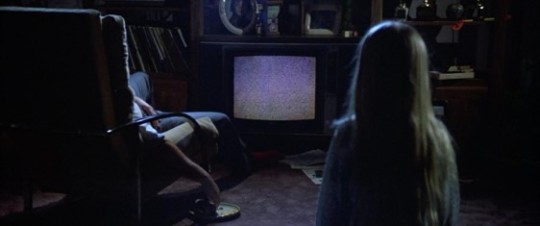
Overall, intertextuality is happening everywhere in the realm of 3D environment art whether we as artist choose it or not, environmental art is vital to telling stories and showing meaning through visual and cultural references. It acts as a non-verbal language, through its visual beauty and art, the players can immerse into any world the creators wish the players to immerse themselves in. connecting in a way that’s new and unique in a fictional way, or through recognition in a non-fictional way. The connection between play and the 3D world is important as all artists understand, and intertextuality most likely will always play its part in creating bigger and better worlds.
Bibliography
https://assassinscreed.fandom.com/wiki/Notre-Dame
https://en.wikipedia.org/wiki/Notre-Dame_de_Paris
https://en.wikipedia.org/wiki/Assassin%27s_Creed_Unity
https://www.moviejawn.com/home/2019/1/14/poltergeist
0 notes
Text
5. Signs - Syntagmatic and Paradigmatic analysis in video game characters?
In this blog, I would like to talk about how Syntagmatic and Paradigmatic analysis can affect the decision making and design process that developers may have to consider when creating characters, and how these decisions can influence the viewers perspective on the characters and their games as a whole.
Semiotics is the study of signs, and how signs can relay information in different ways (Britannica, 2024). They can get across information through the means of an Iconic signifier, and example of that would be a picture of a cat, there is nothing else that could reference anything else, the picture of the cat represents the sign that it is a cat and that’s what it is, to something a little more complex. A symbolic signifier for example would be the use of a red light at a traffic light, there is nothing to indicate that red means stop, but through context and understanding of modern forms, people understand and its generally now known that red means to stop, even though there is no real reasoning behind it, as its arbitrary, but through the context, red means to stop. (Peirce, (1893-1913))
Whereas syntagmatic analysis studies the 'surface structure' of a text, paradigmatic analysis seeks to identify the various paradigms (or pre-existing sets of signifiers) which underlie the manifest content of texts. (Chandler, 2021). What is meant by this is that syntagmatic analysis is understanding that people can make conclusions, decisions and understand information based on what is right in front of them as a literal form, where it’s a piece of text or something visual, we can take information at a surface level. On the opposing side of this is paradigmatic analysis, latent content where the user has to think a little deeper, not about what they are reading or viewing, but what they aren’t, information can still be gathered by what isn’t been showing or said. Using this theory boasts and interesting direction for character development in the video game industry.
Lara Croft is a character in the Tomb Raider series and is a staple and face of the franchise, using syntagmatic and paradigmatic analysis we can draw information about Lara Croft without even knowing anything about the characters or the game, purely just on looks alone. Looking at the character, we can see she is wearing boots, which can indicate that she is active, maybe adventurous, we can see that she is also wearing some brown shorts and a turquoise vest, further enhancing our decisions that she is adventurous, maybe located somewhere hot too. She also wears a holster on her thigh and is armed with dual pistols, which tell us that she is an action character, possibly going to dangerous places where she would have to defeat enemies, all this information is retrieved through syntagmatic analysis, now let’s focus on the paradigmatic. Using the information that we know tells can give us information that the character is not a character that sits on the beach all day, they look like a go-getter action hero who isn’t afraid of danger, travelling and exploring in hot countries always looking for a new adventure. Not a character that is timid, lazy, and scared, who sits at home all day or a princess in a castle who needs saving.
There are other characters such as Tifa Lockhart from Final Fantasy and Jill Valetine from Resident Evil who also portray this kind of character, and you can see it in their design choices the similarities of the characters aesthetics which helps further prove this. The character developers meticulously choose every design detail as it can have a huge effect on how the game is portrayed and what to expect from the game through its choices of character design.
To conclude, with the use of Syntagmatic and Paradigmatic analysis, players and viewers can judge and make their own opinions on video game characters without evening knowing what the game maybe about or what it even is. This gives the developers even more to think about when designing characters and can use this to their advantage if they wanted to through them of the scent and entice them even more about who the character is and what secrets they may hold.
Bibliography
Britannica, 2024. Semiotics. [Online] Available at: https://www.britannica.com/science/semiotics [Accessed November 2024].
Chandler, D., 2021. Semiotics for Beginners. [Online] Available at: http://visual-memory.co.uk/daniel/Documents/S4B/sem05.html [Accessed November 2024].
Peirce, C. S., (1893-1913). The Essential Peirce, Volume 2. [Online] Available at: https://iupress.org/9780253211903/the-essential-peirce-volume-2/ [Accessed November 2024].
0 notes